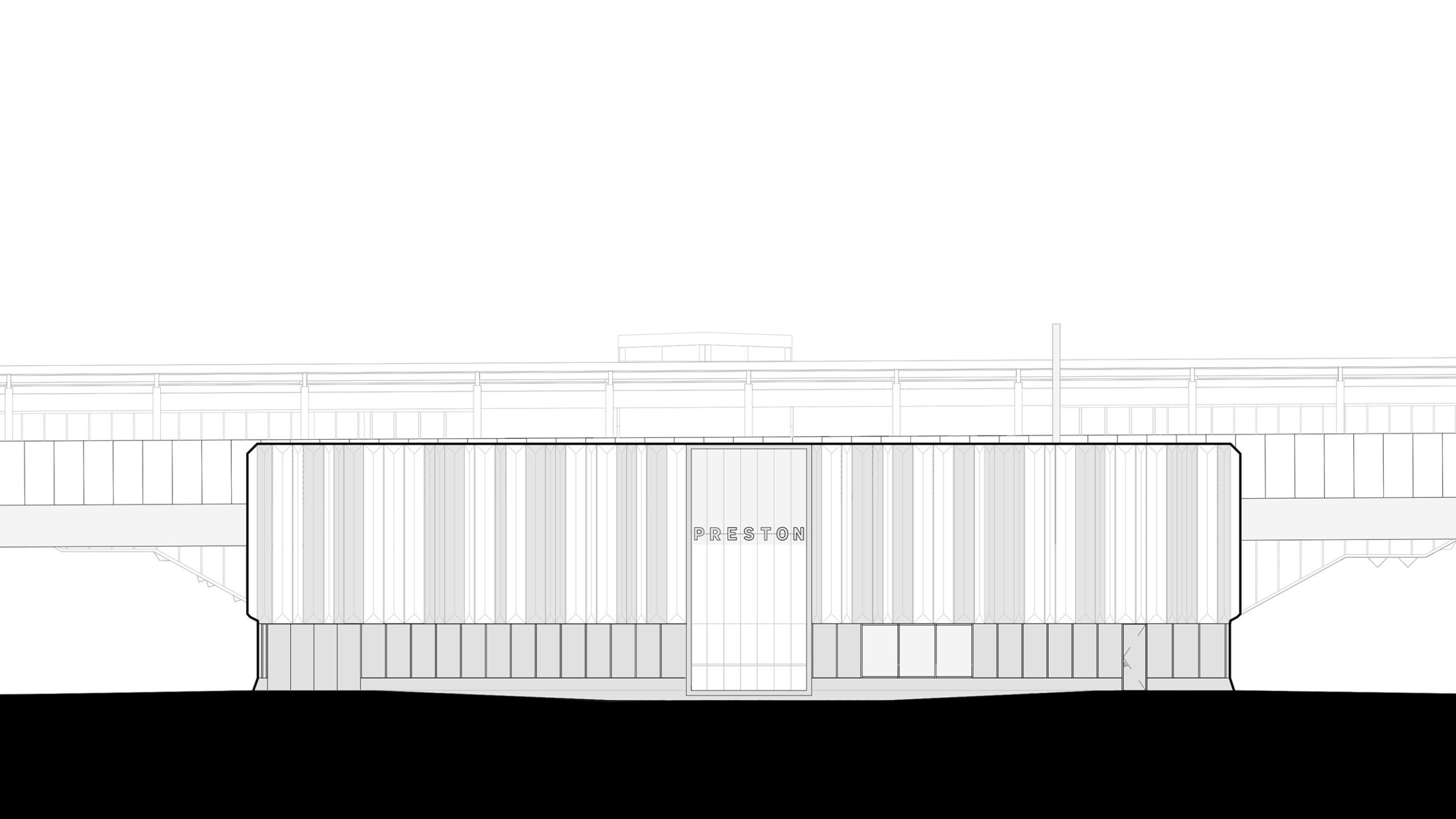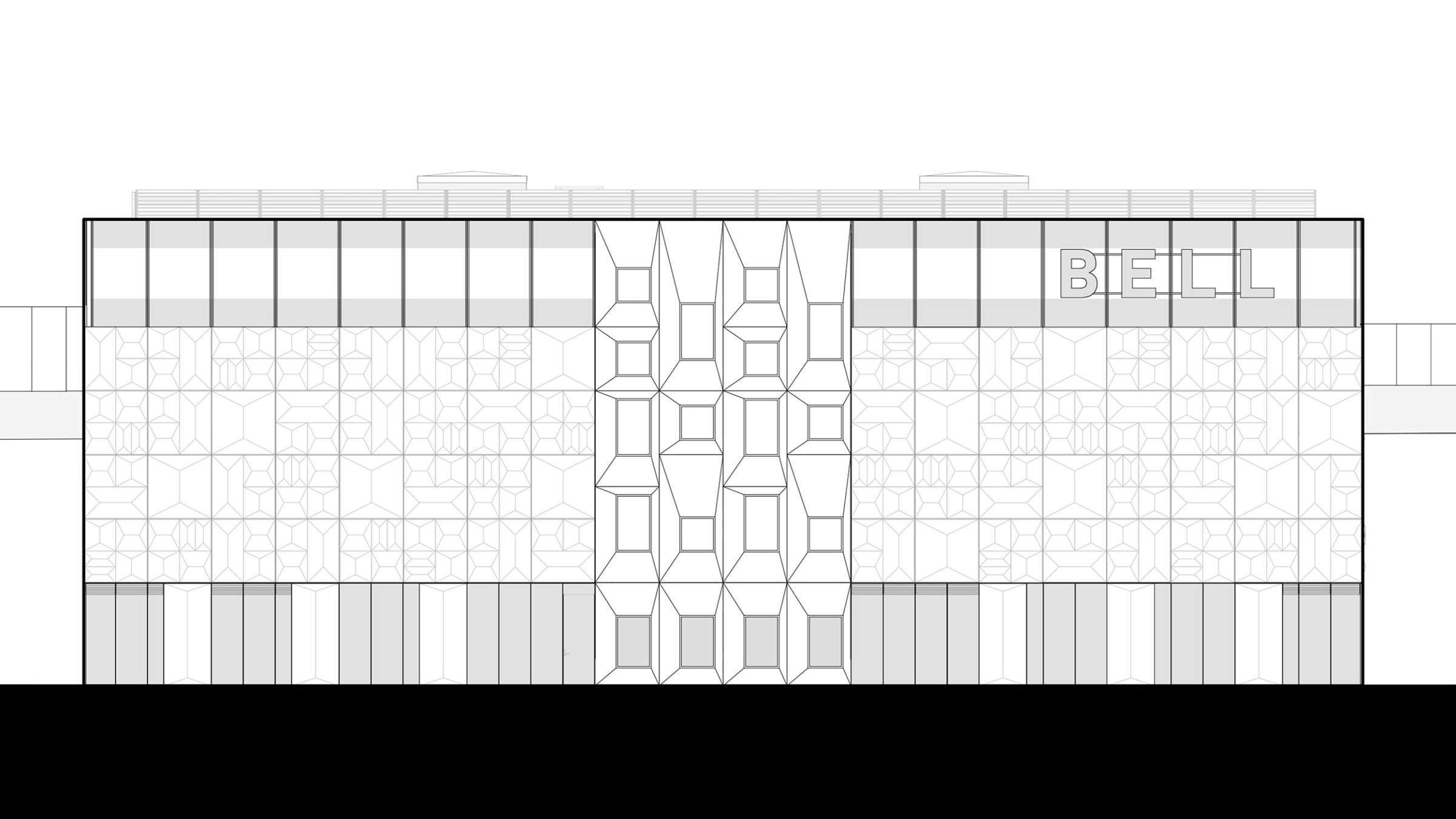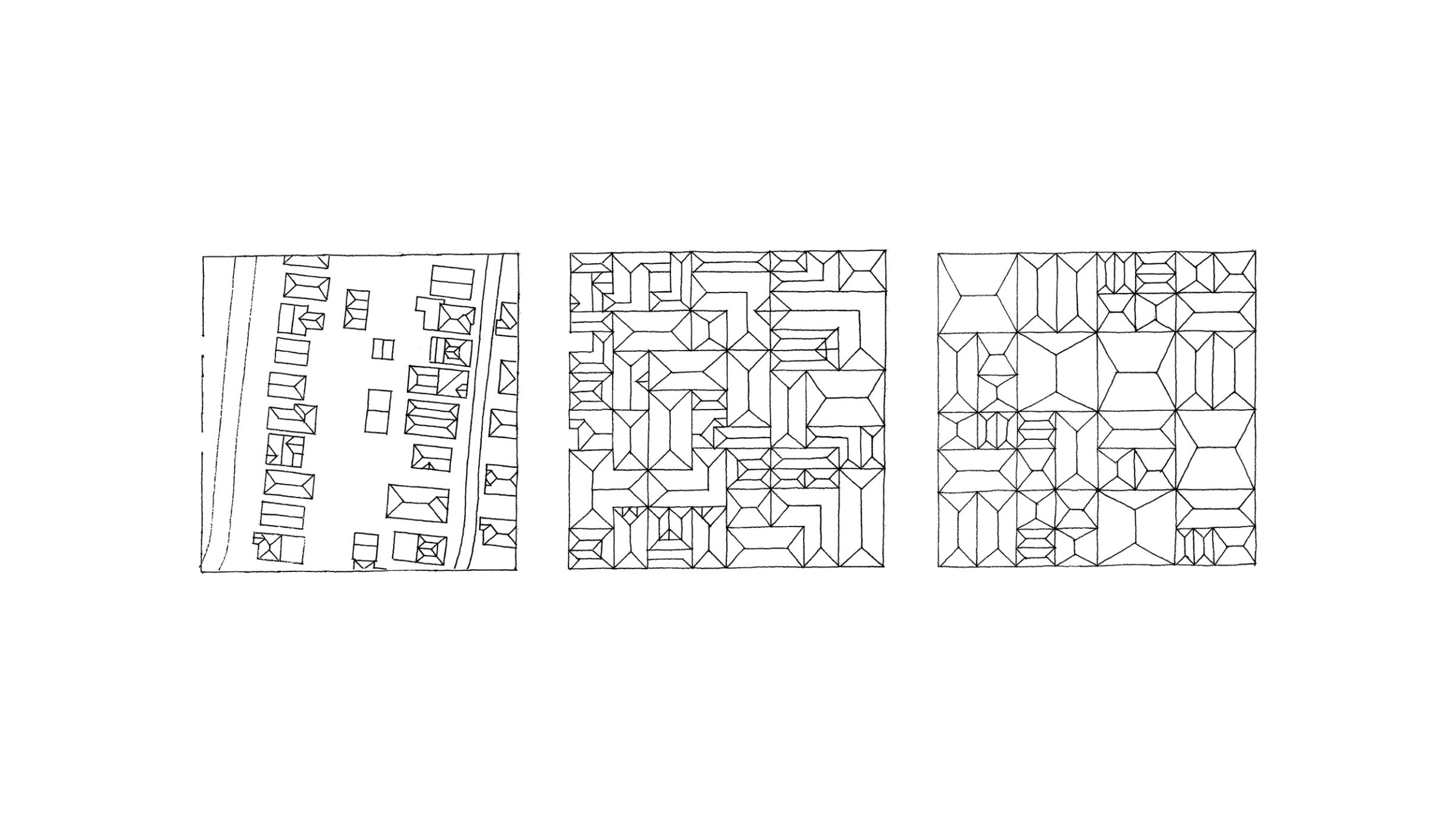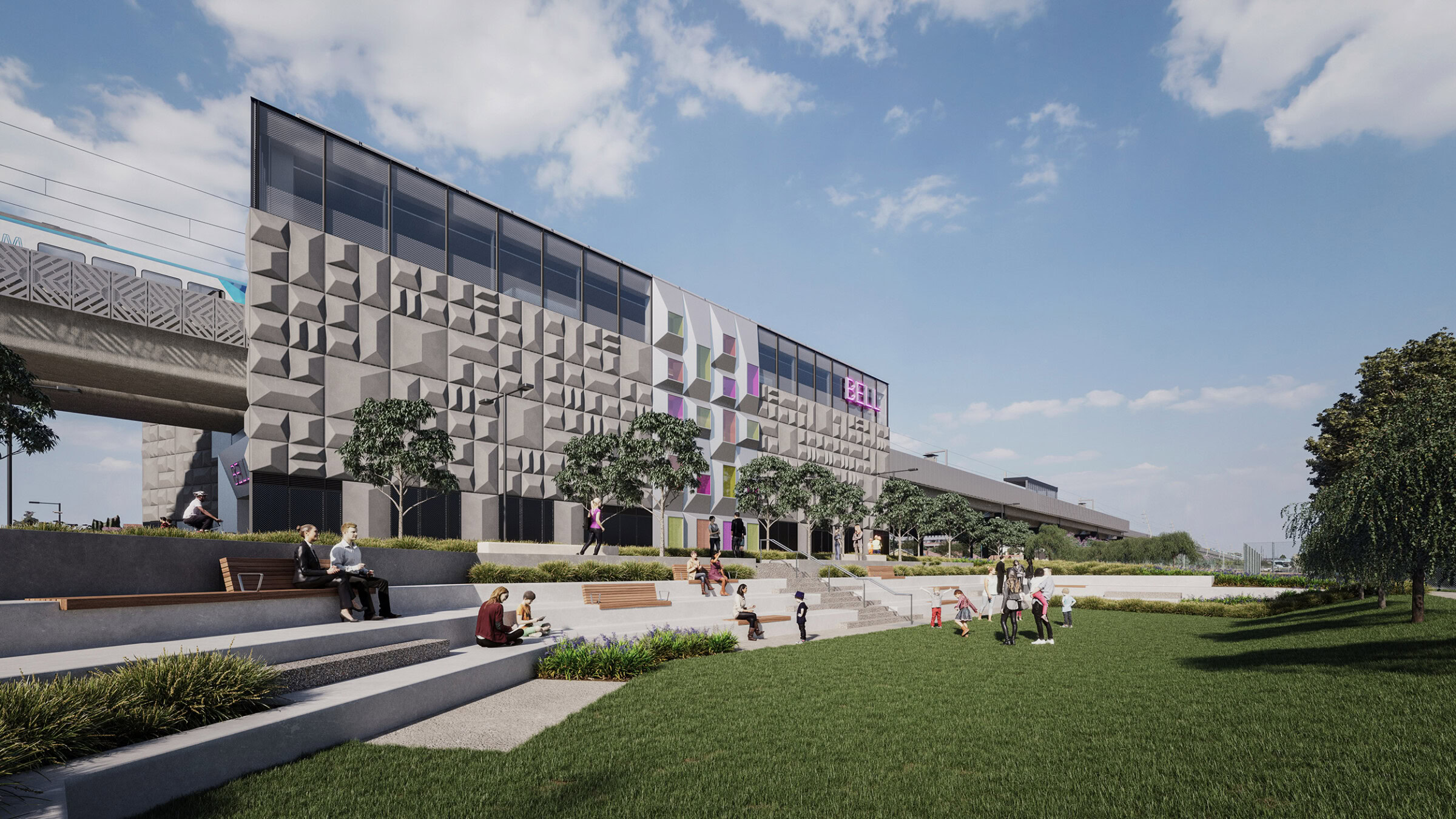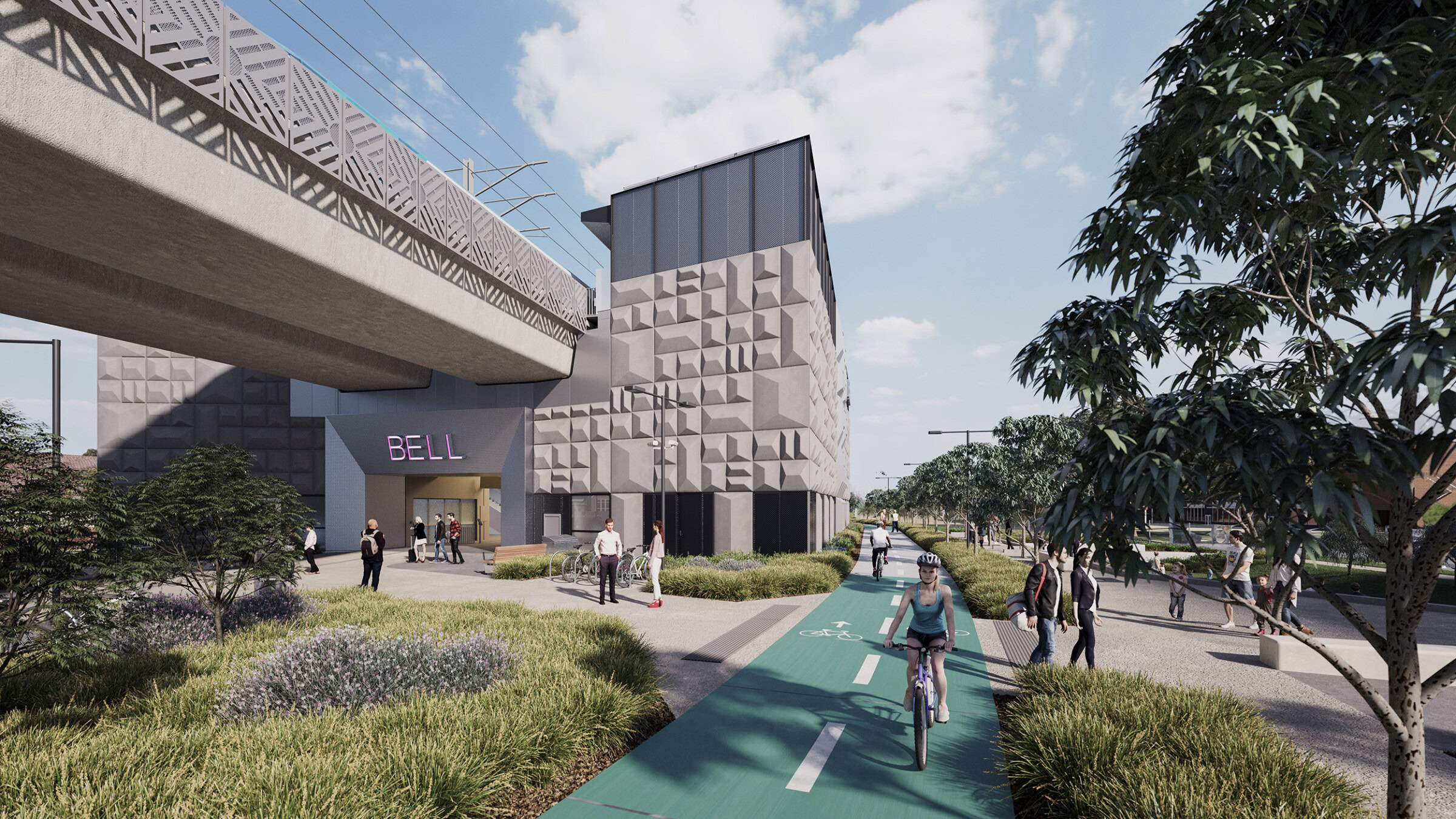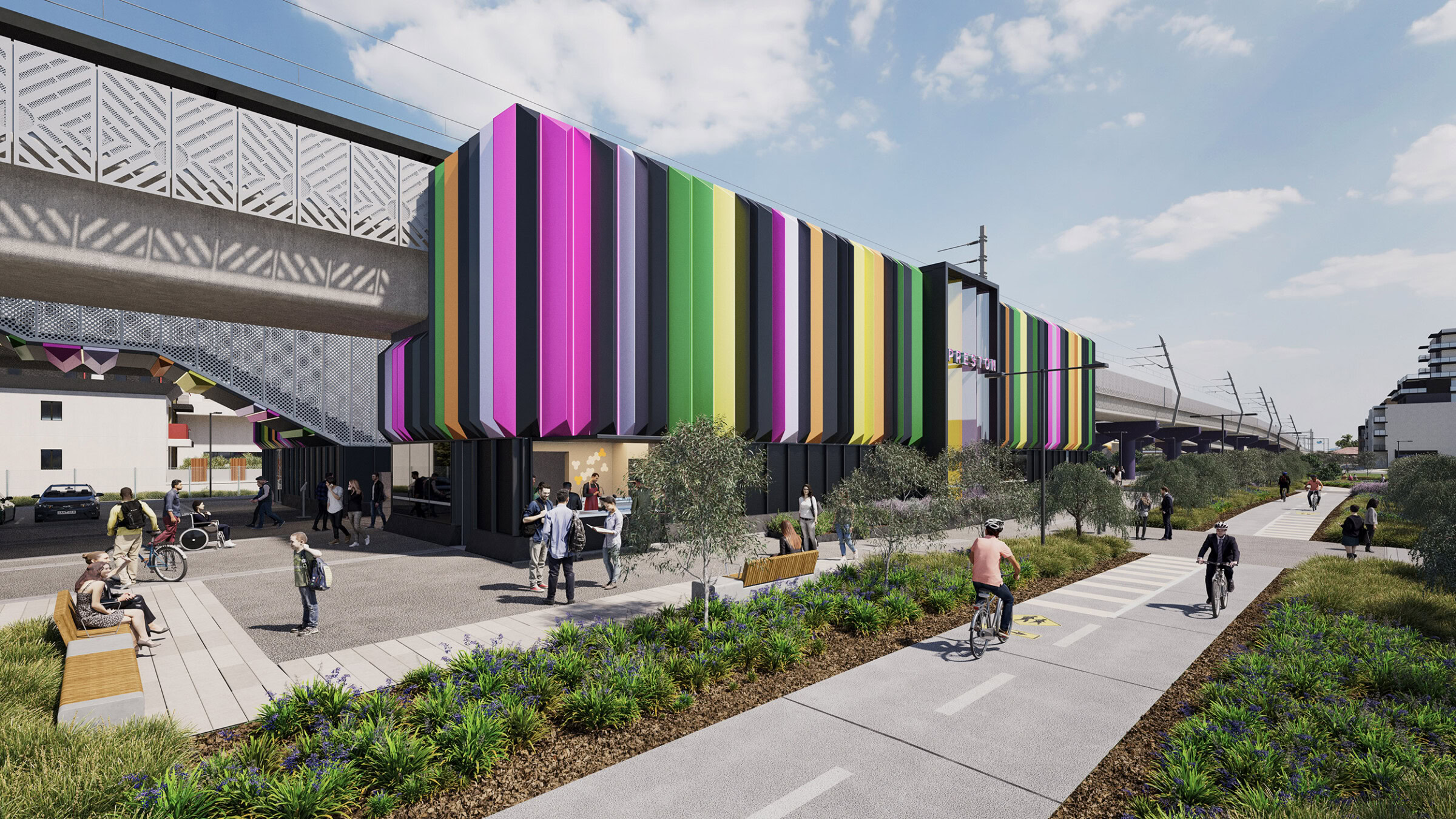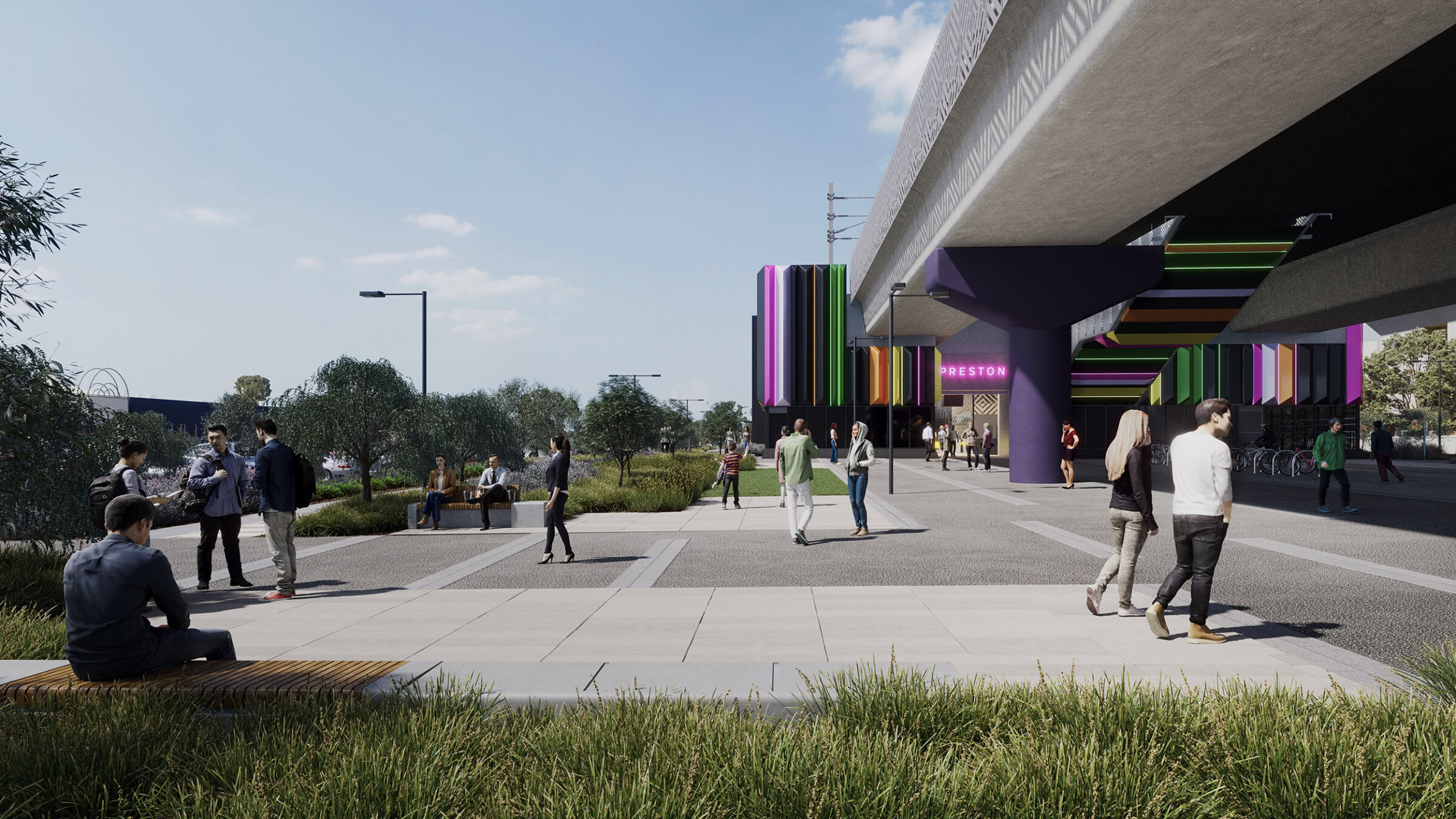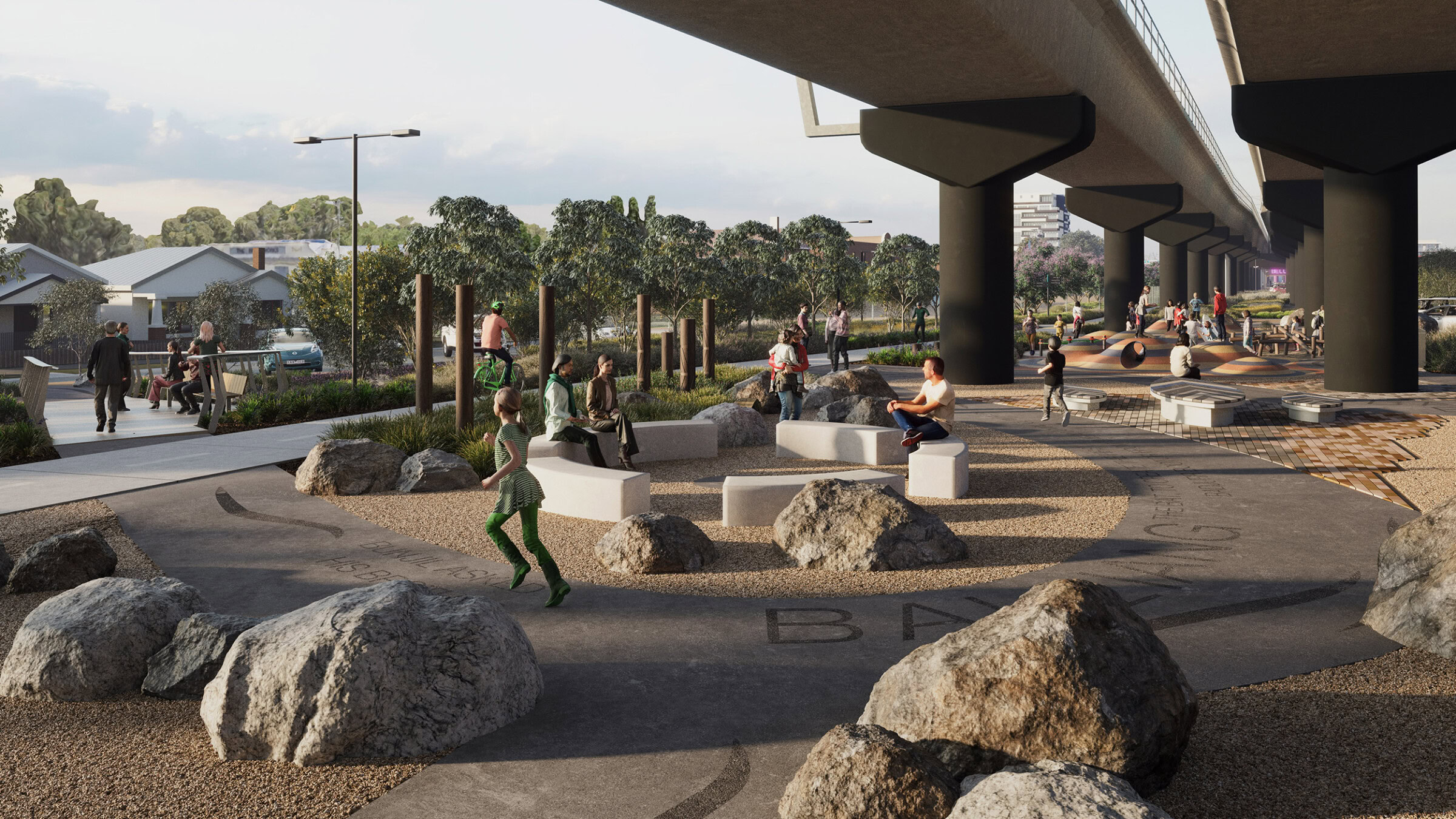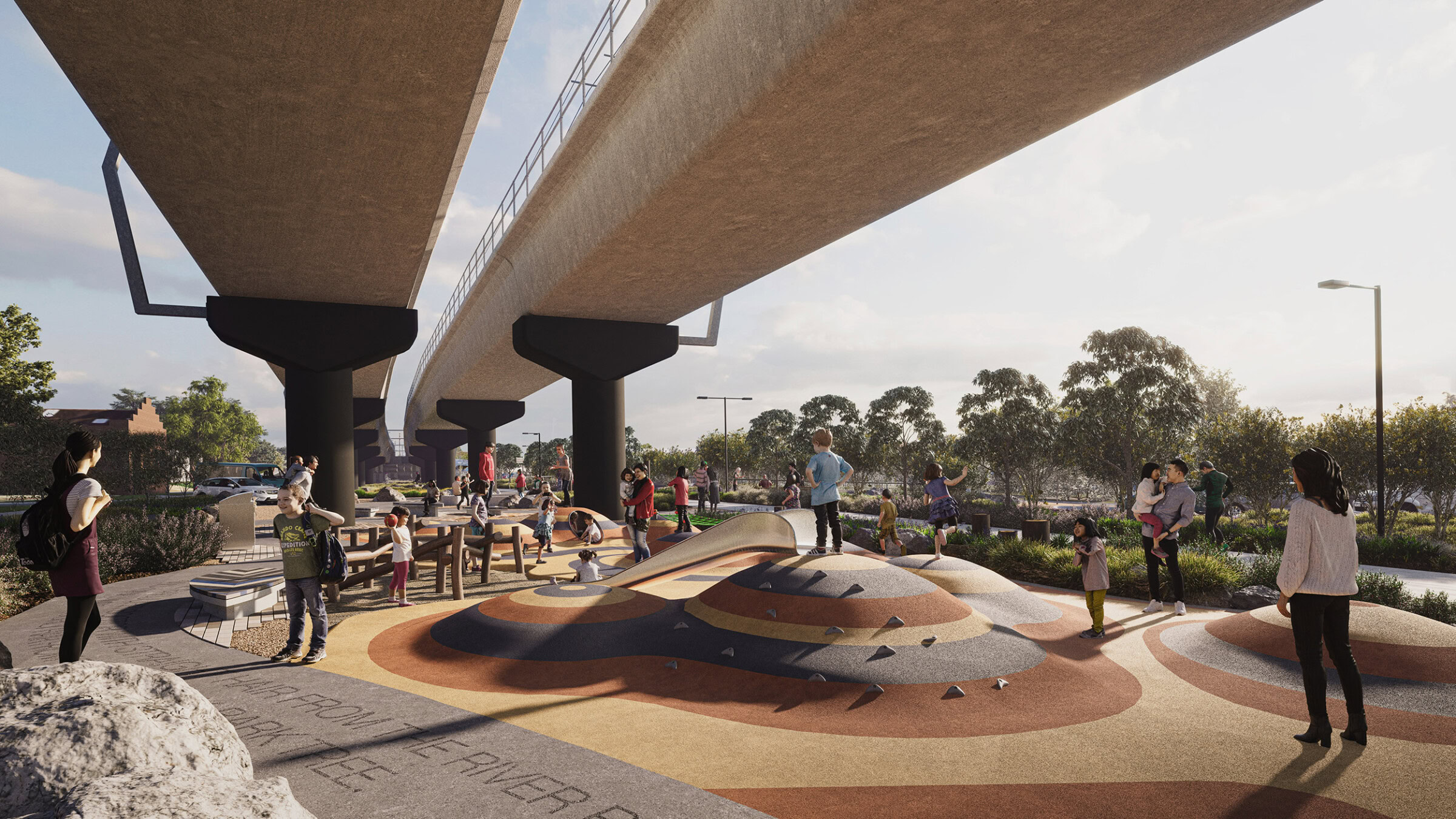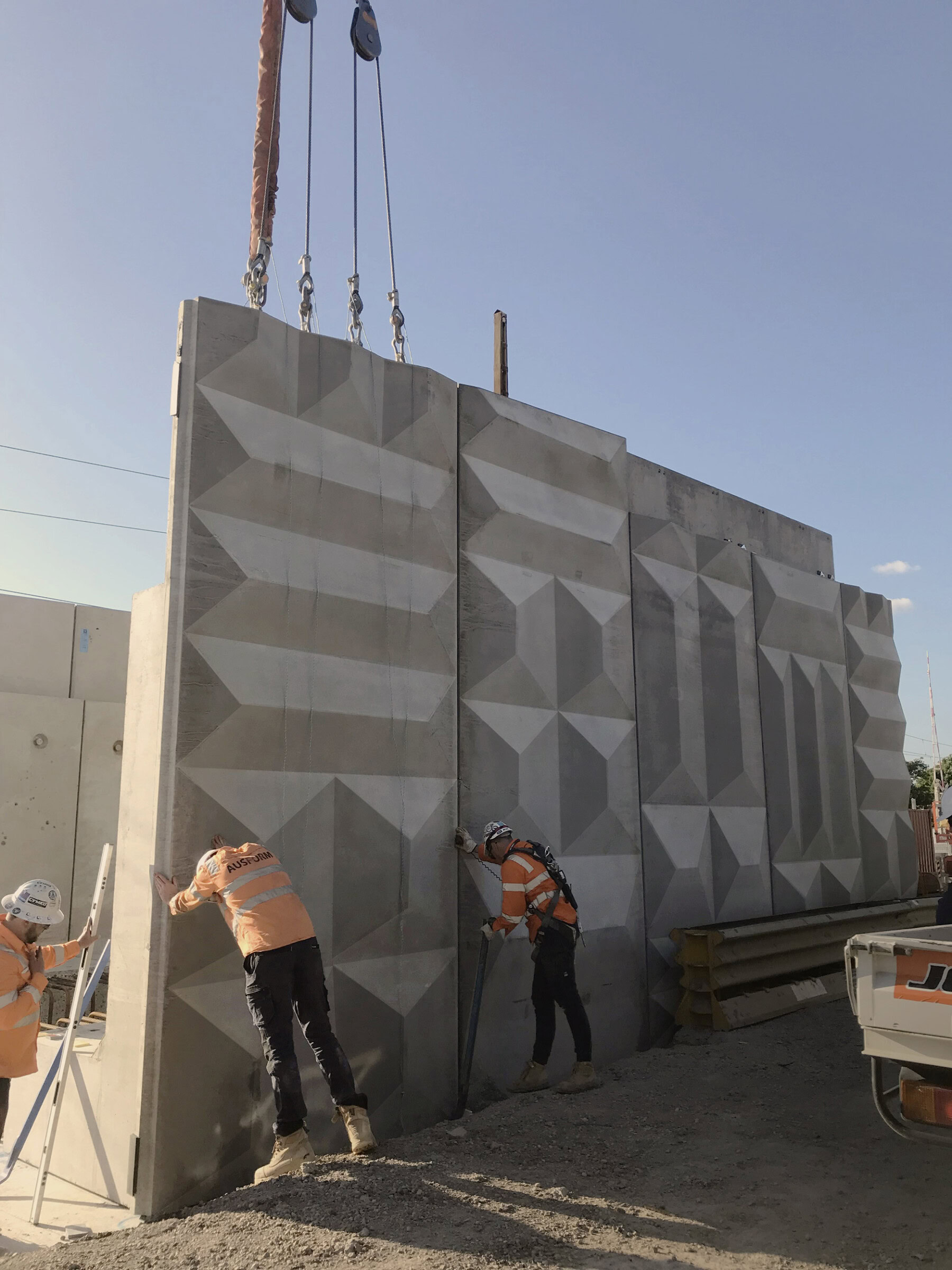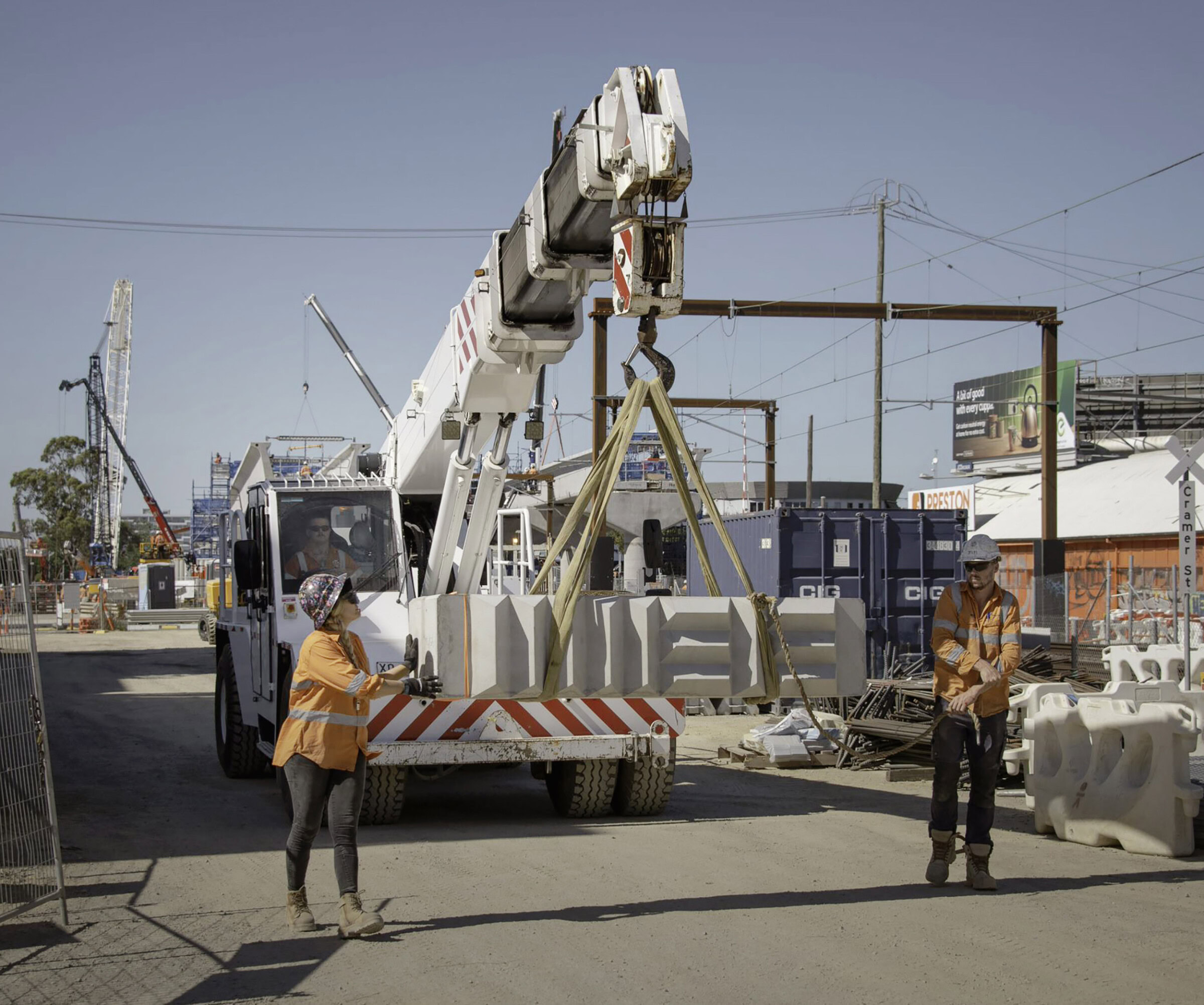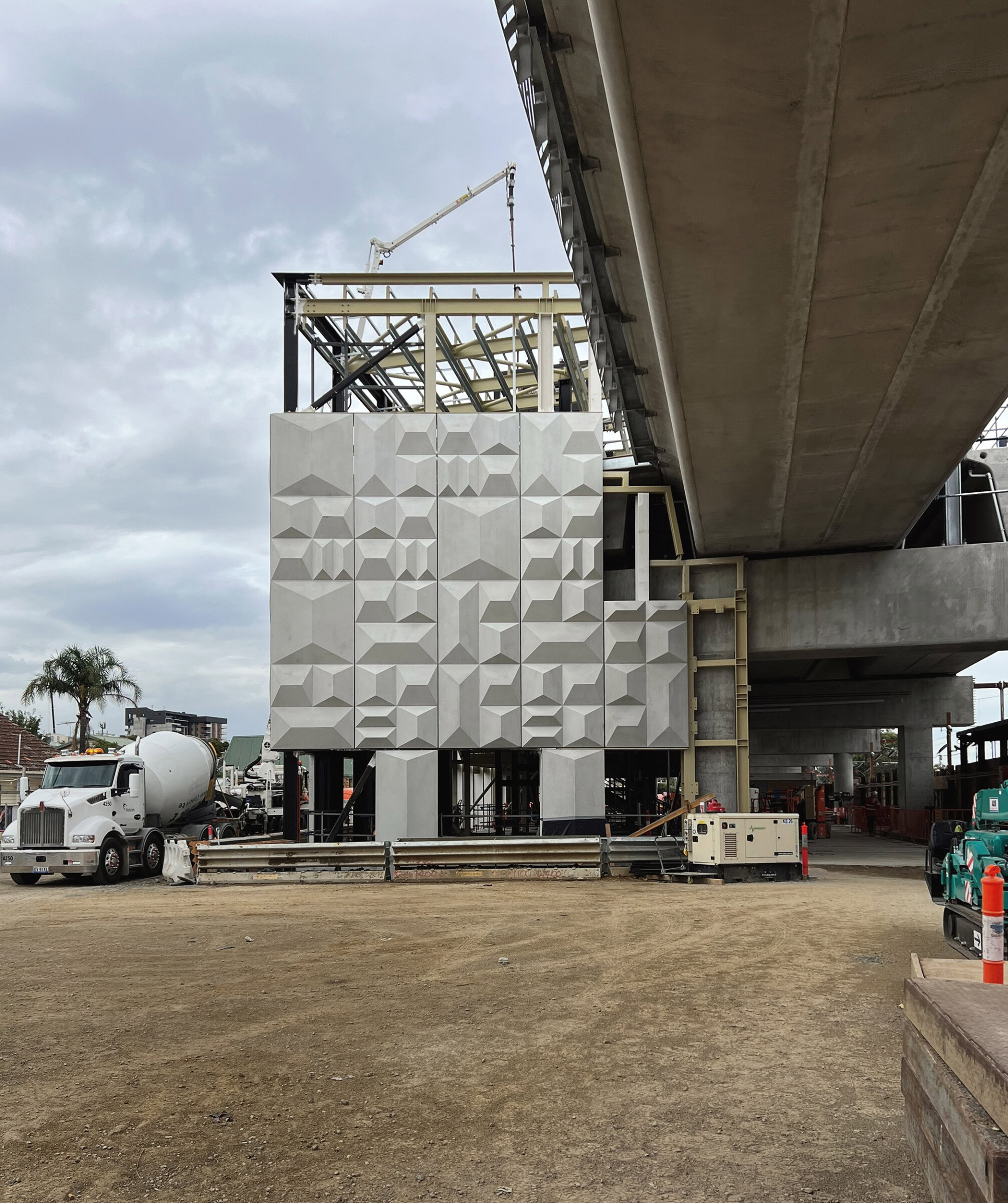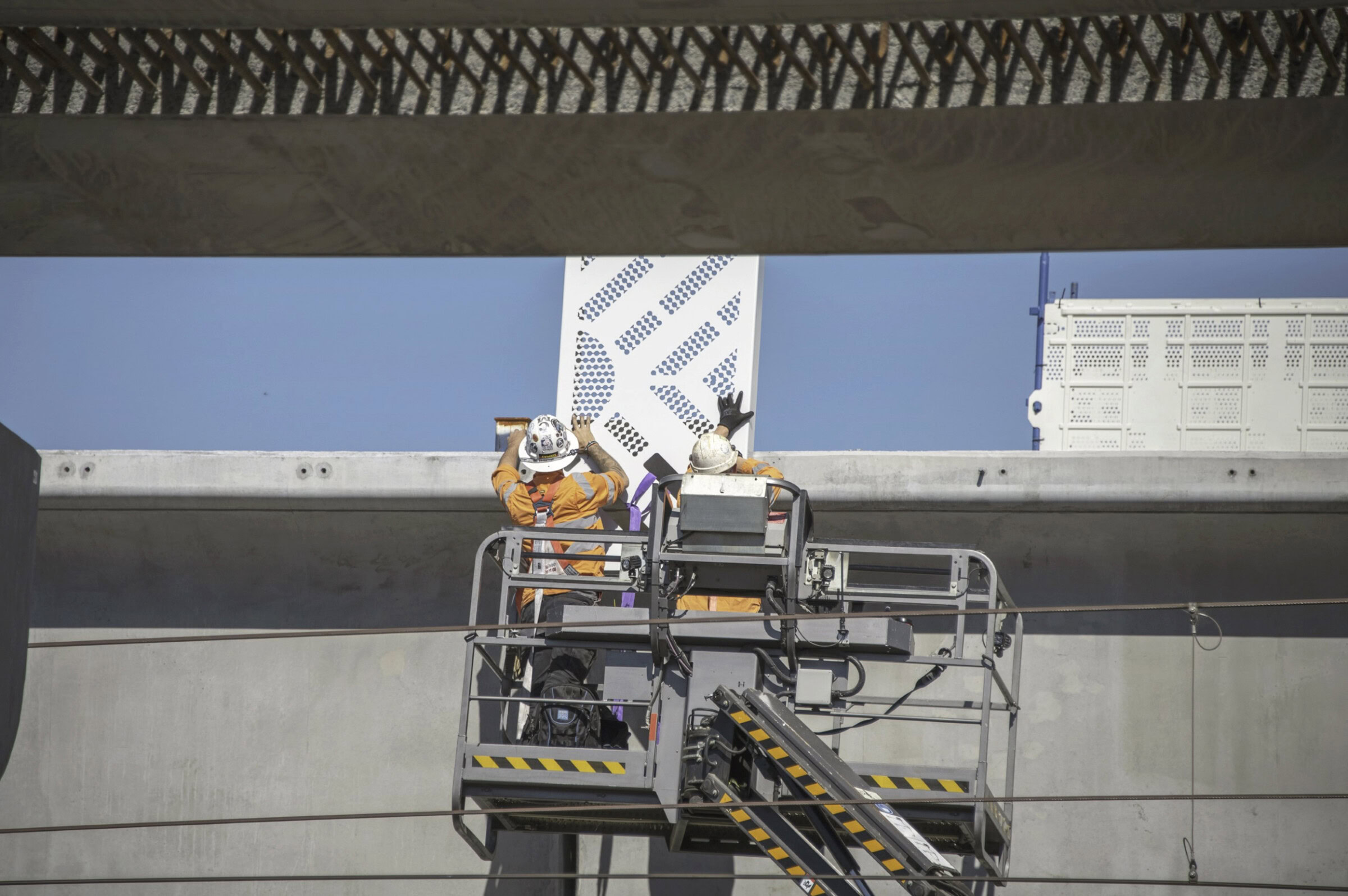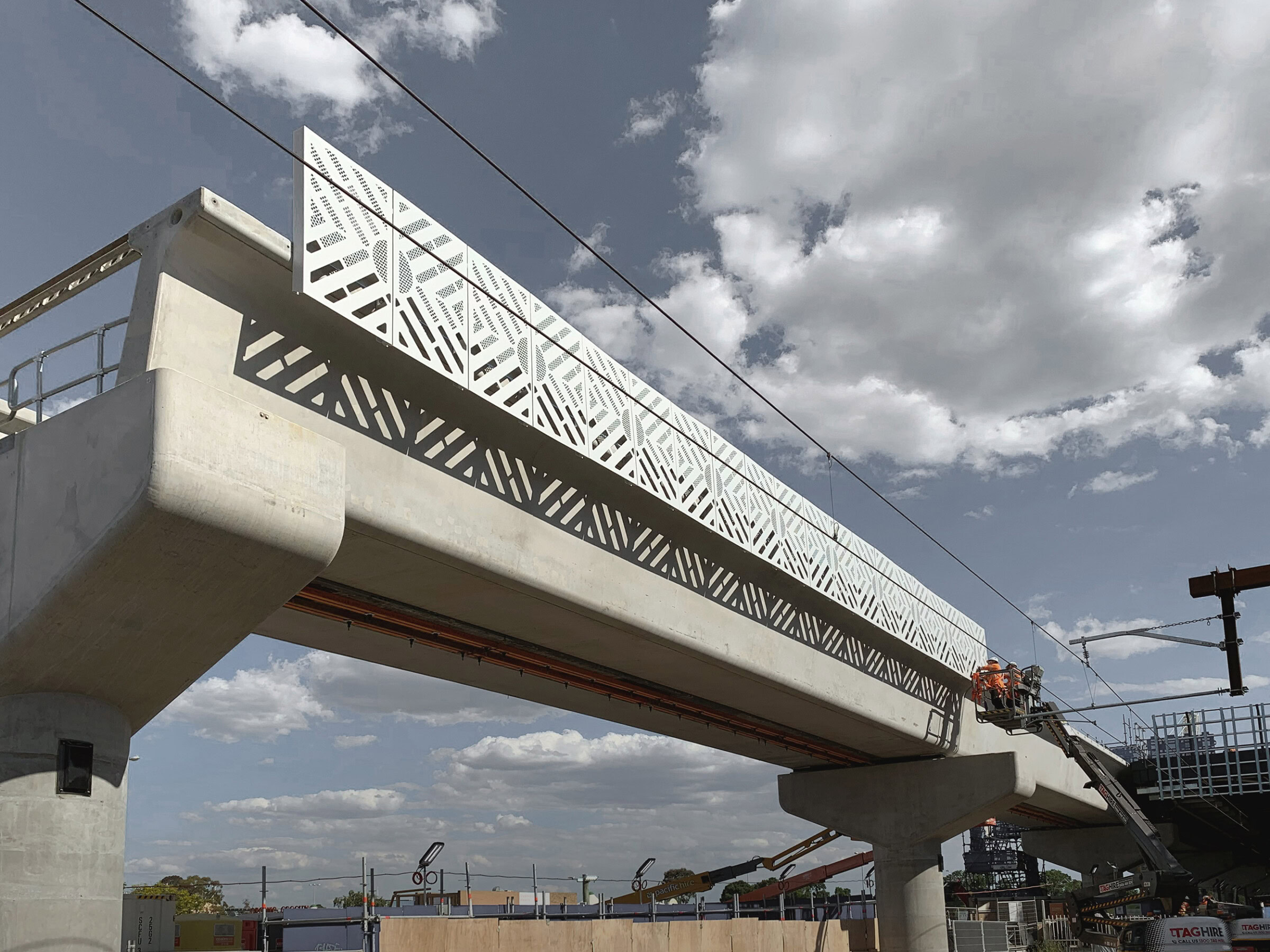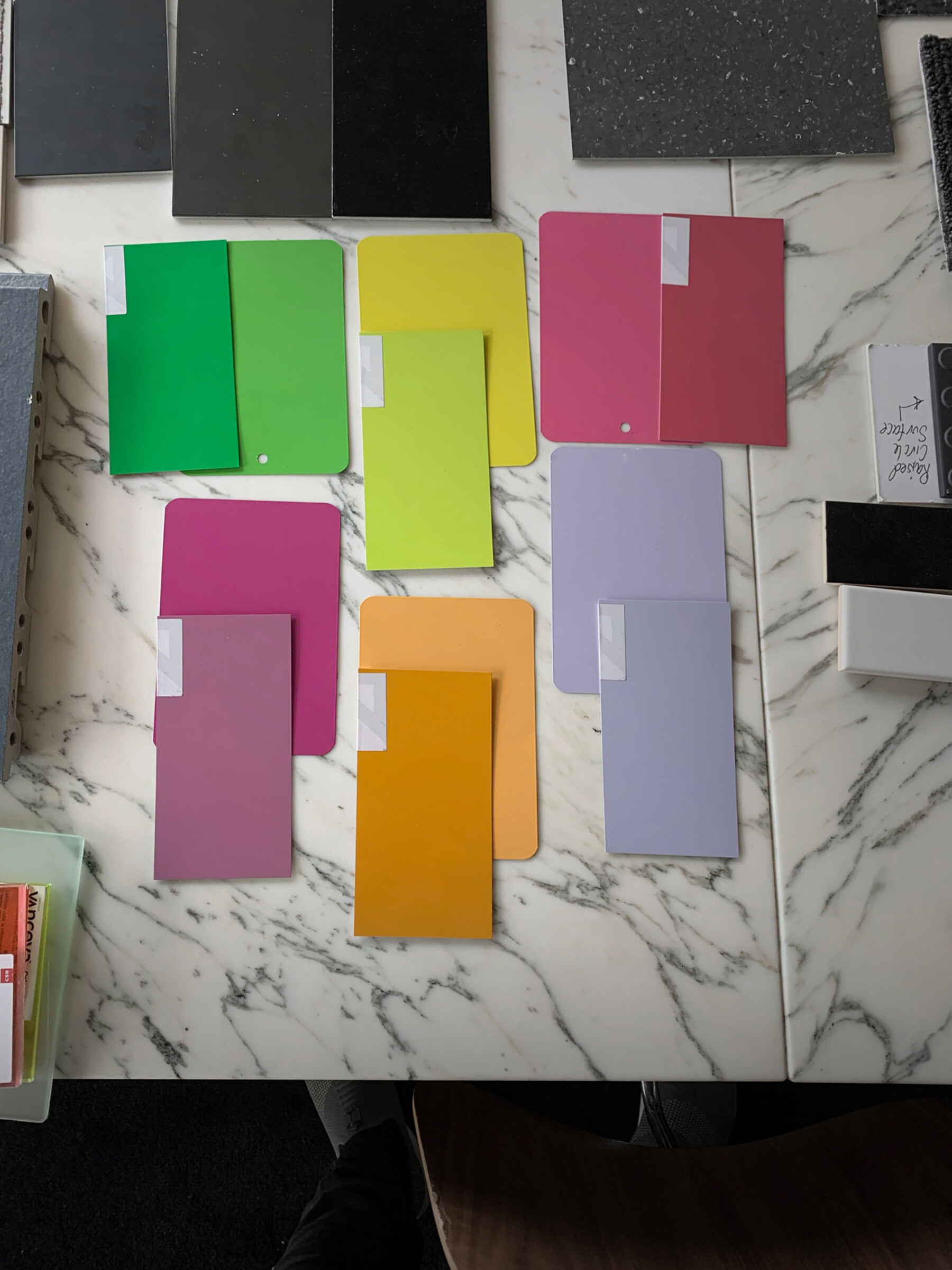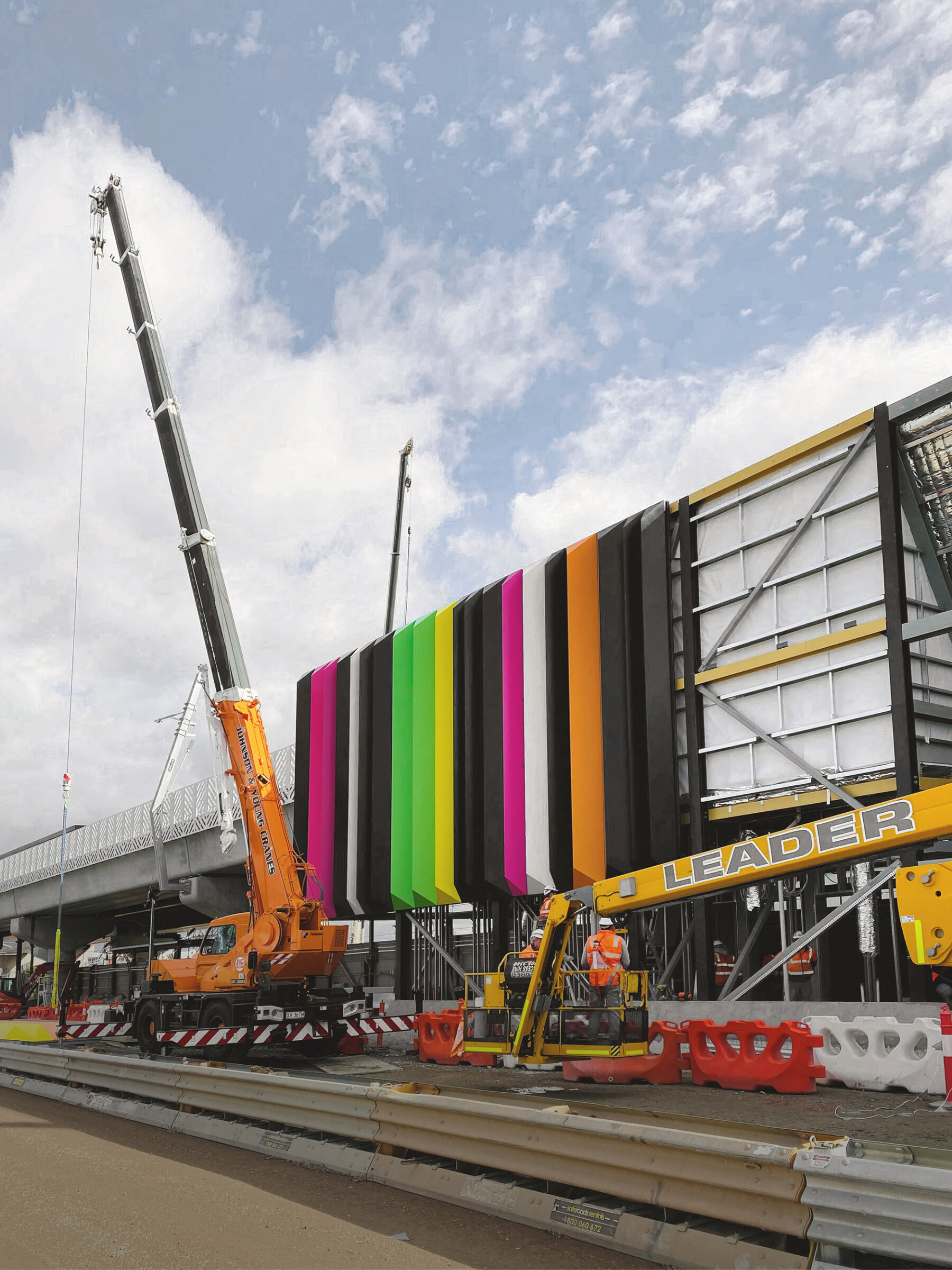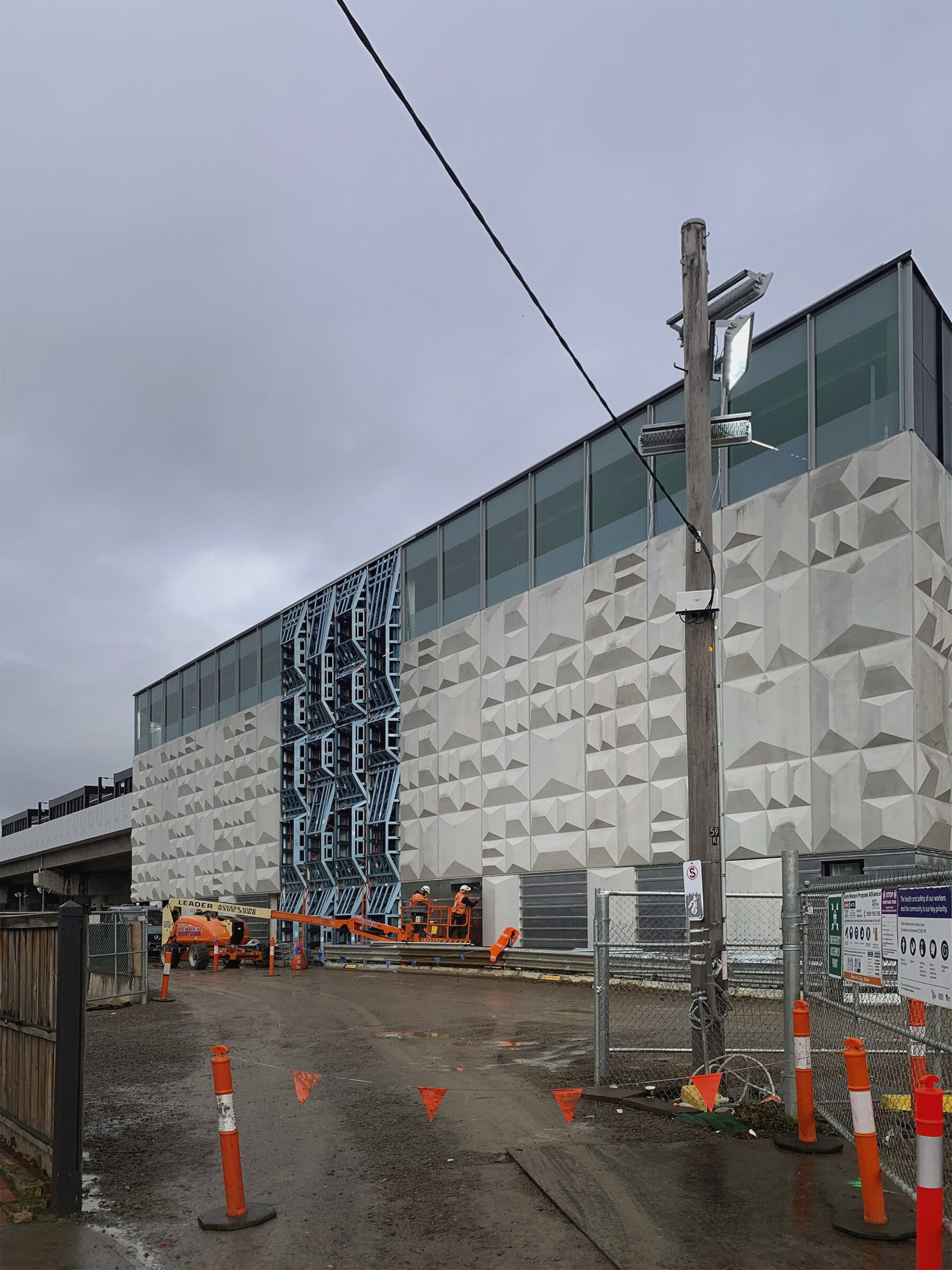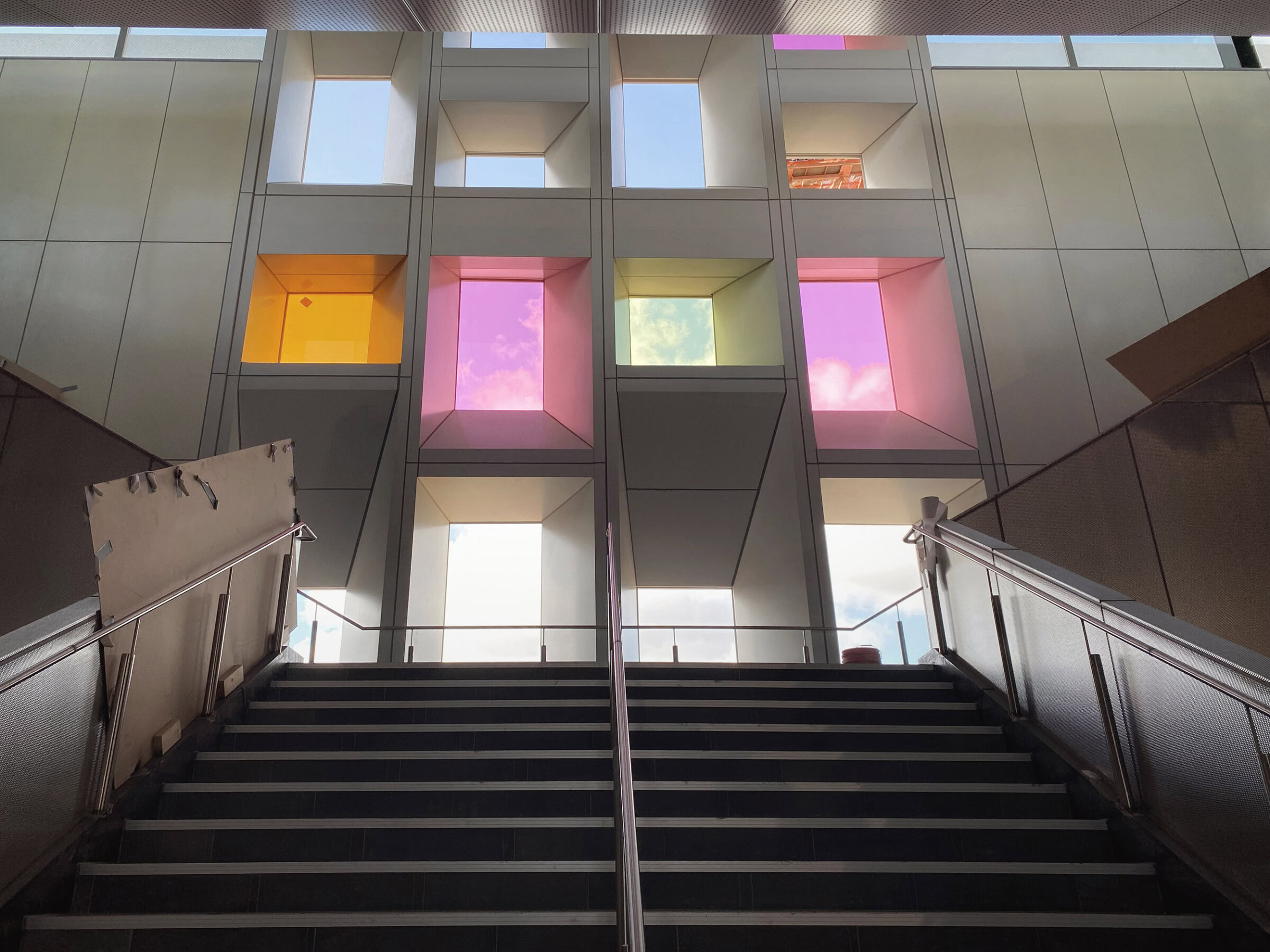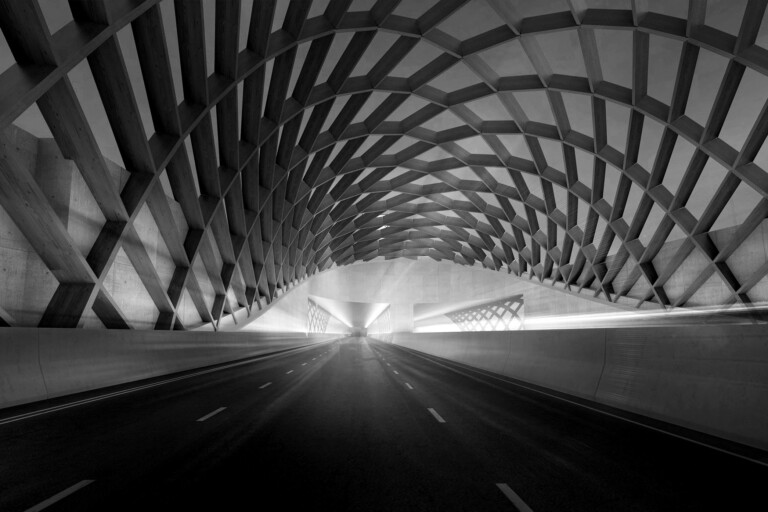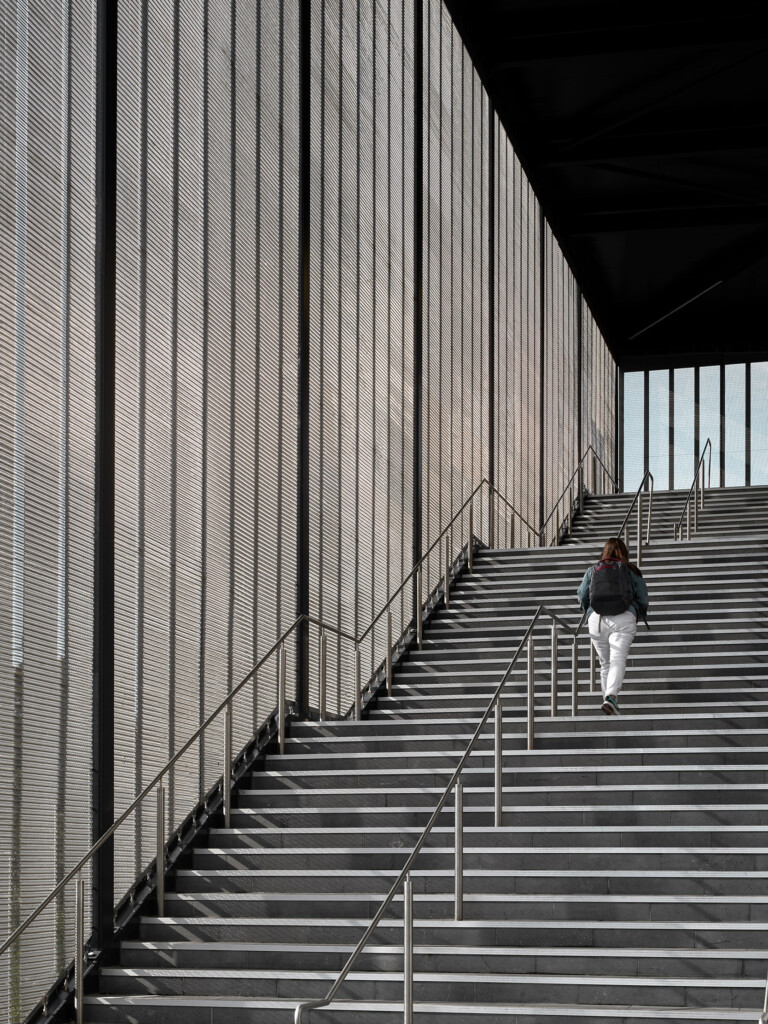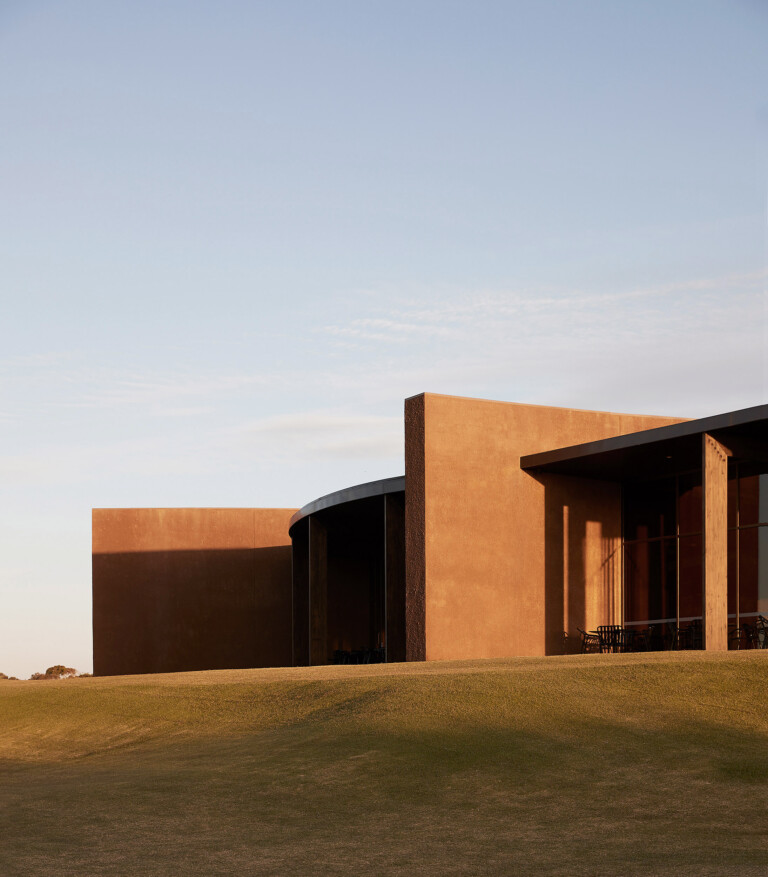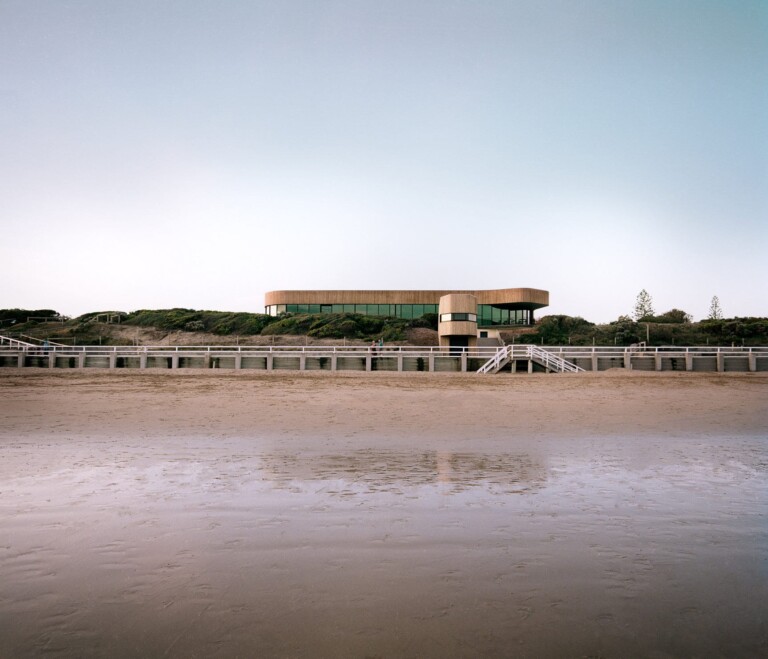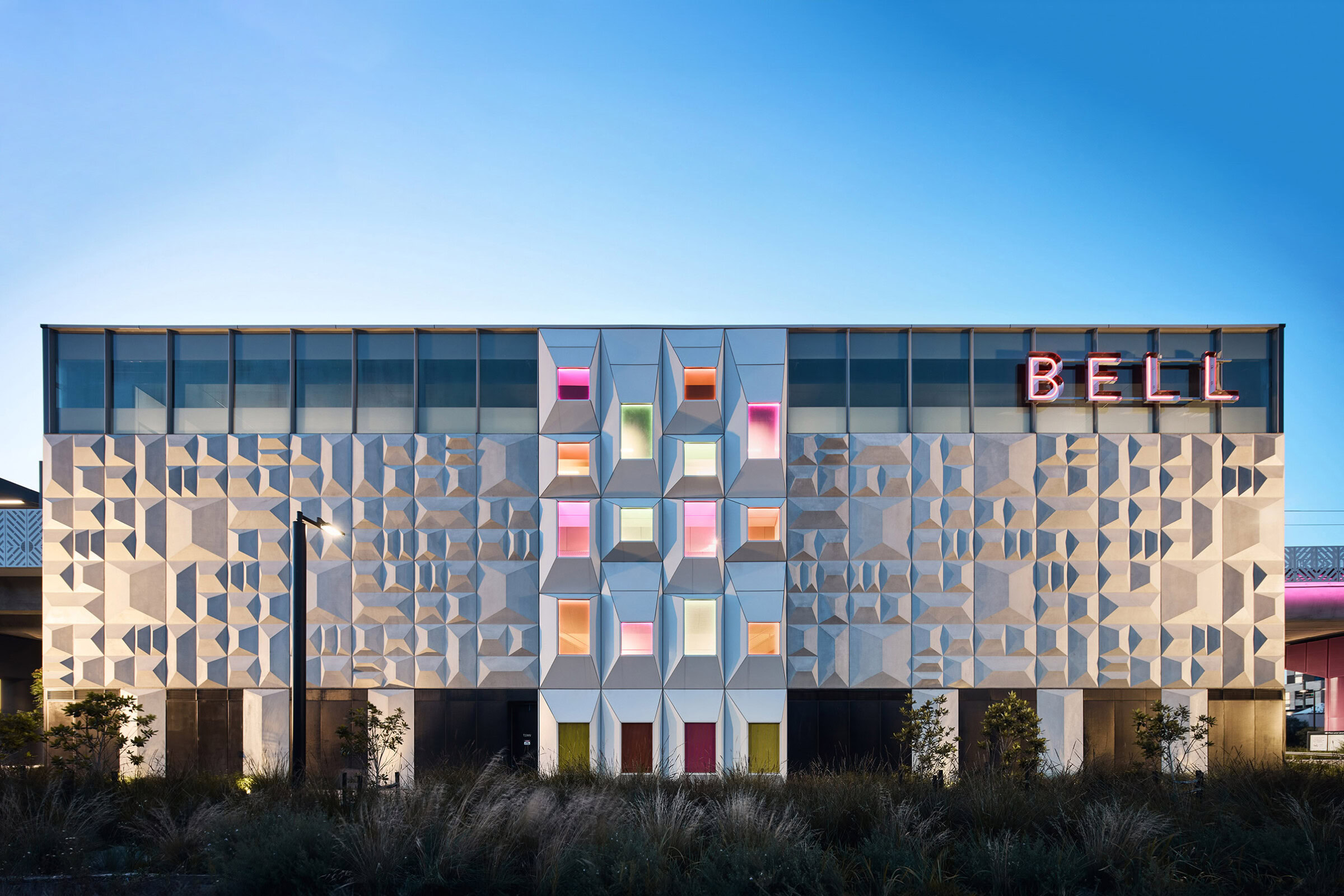
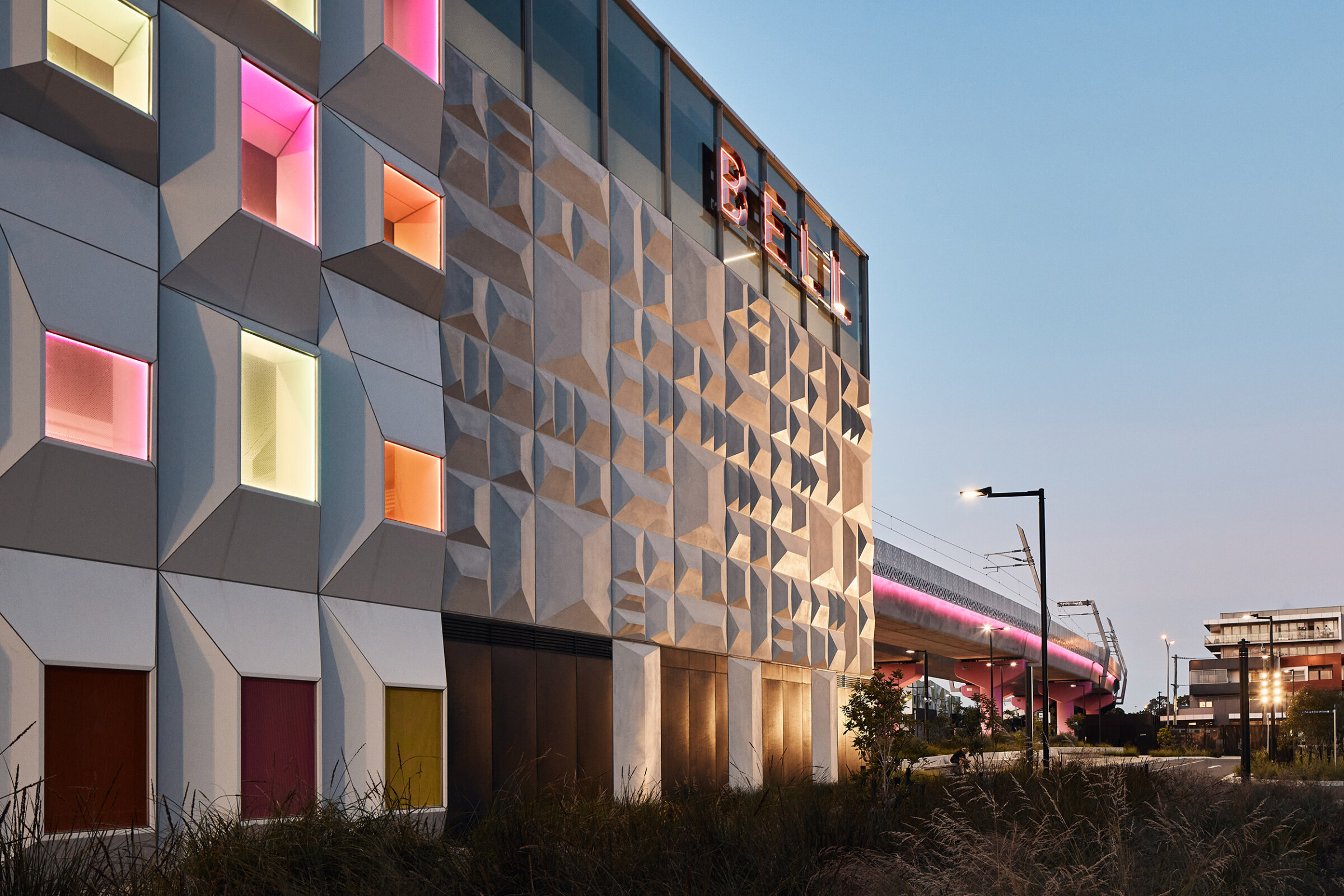
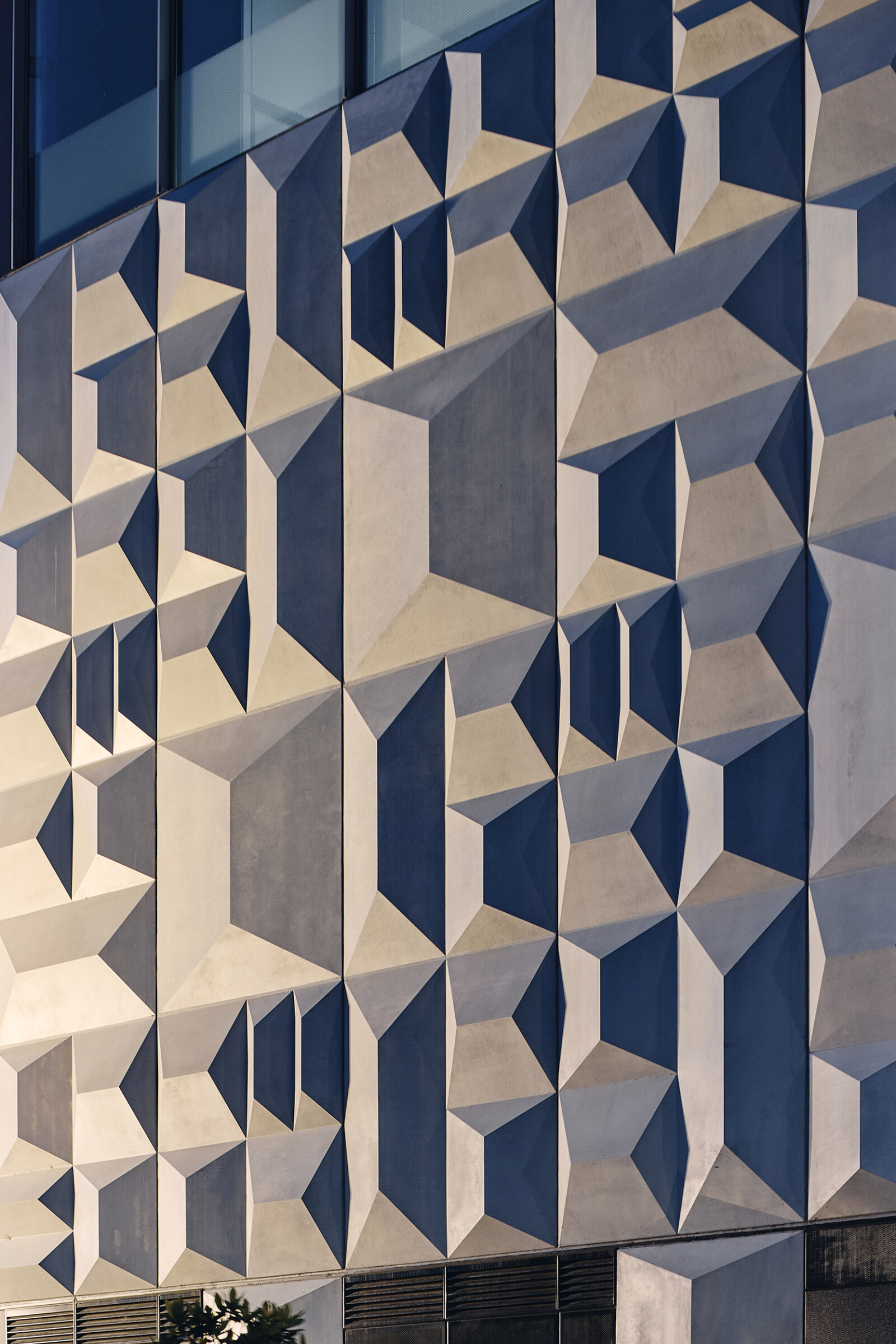
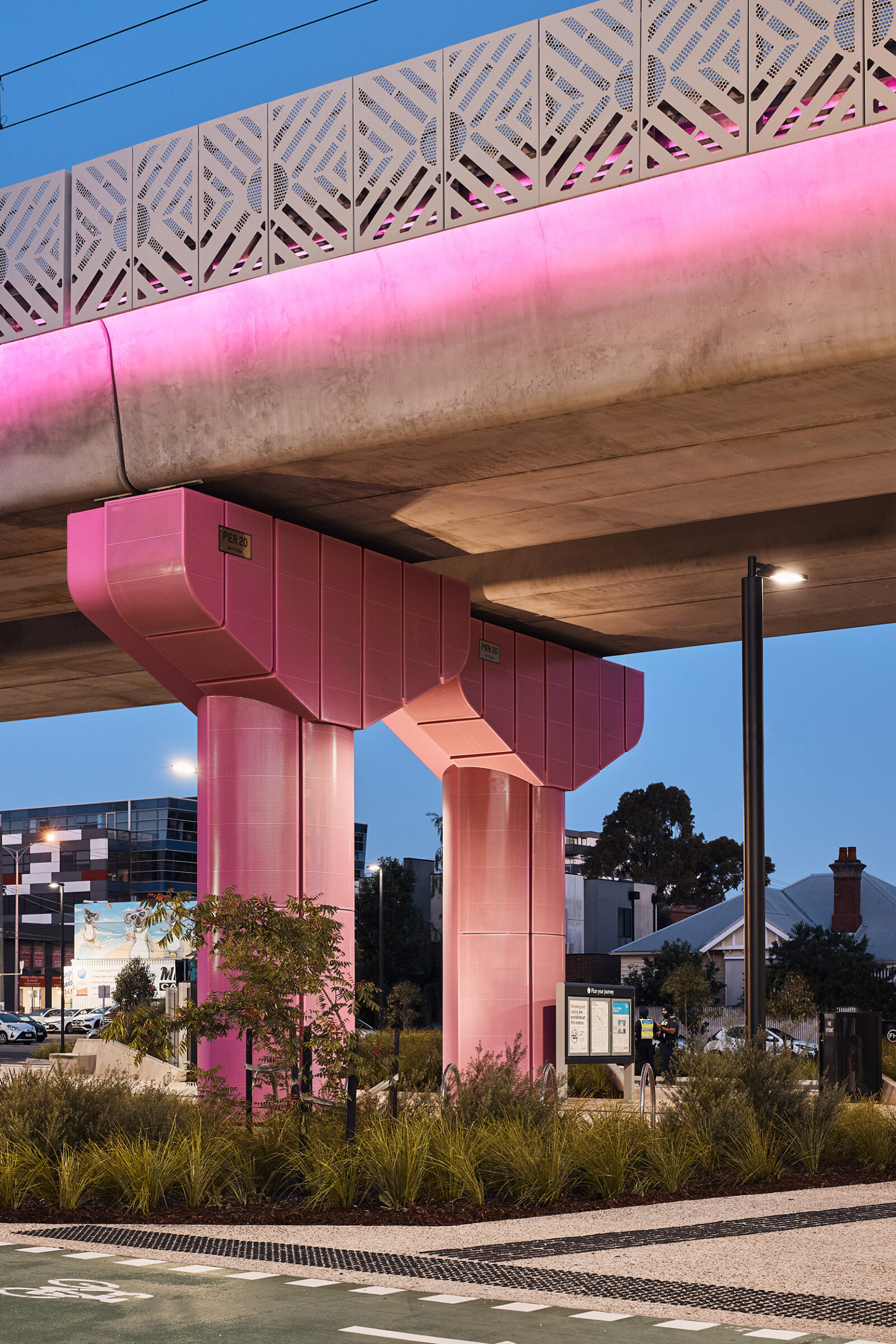
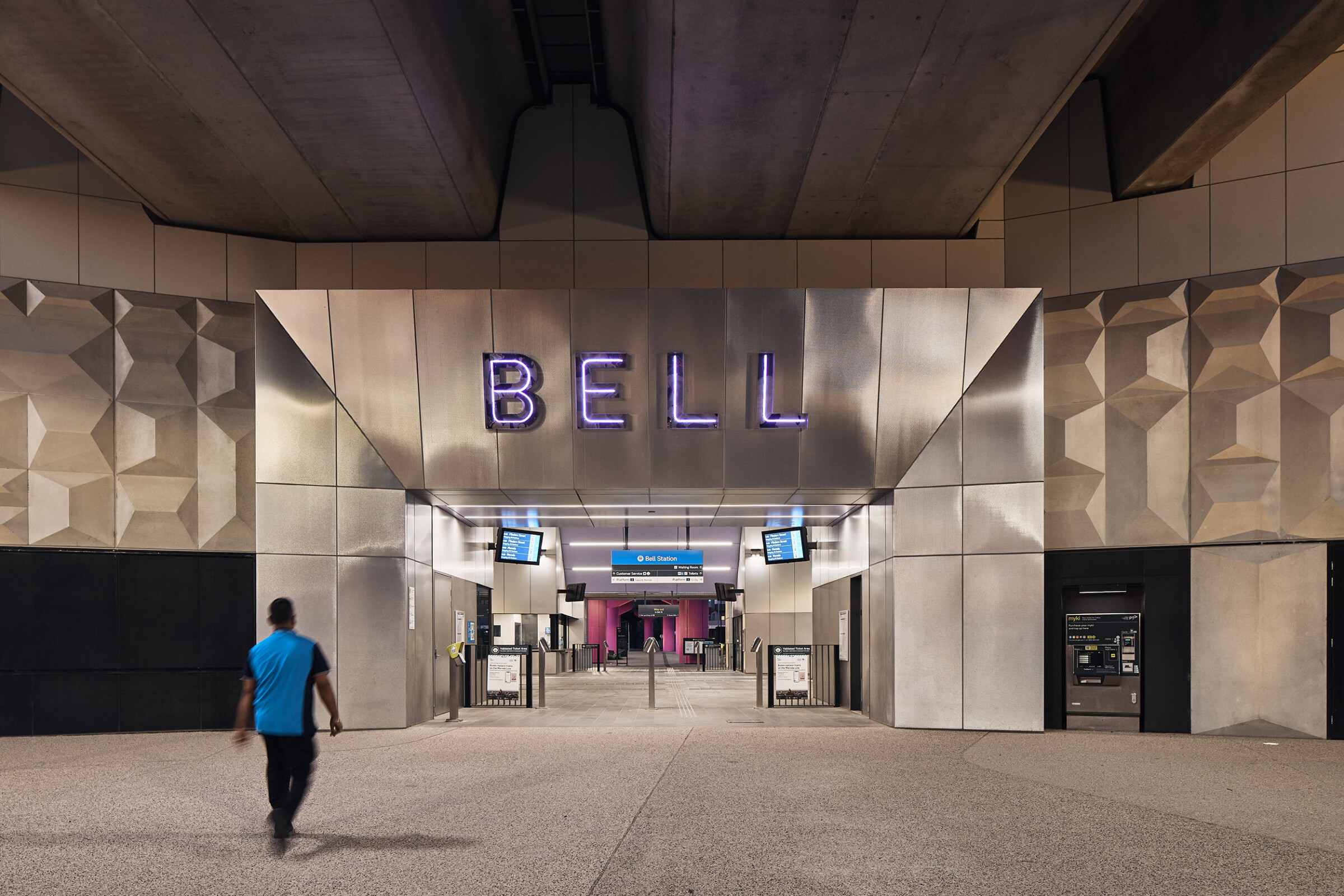
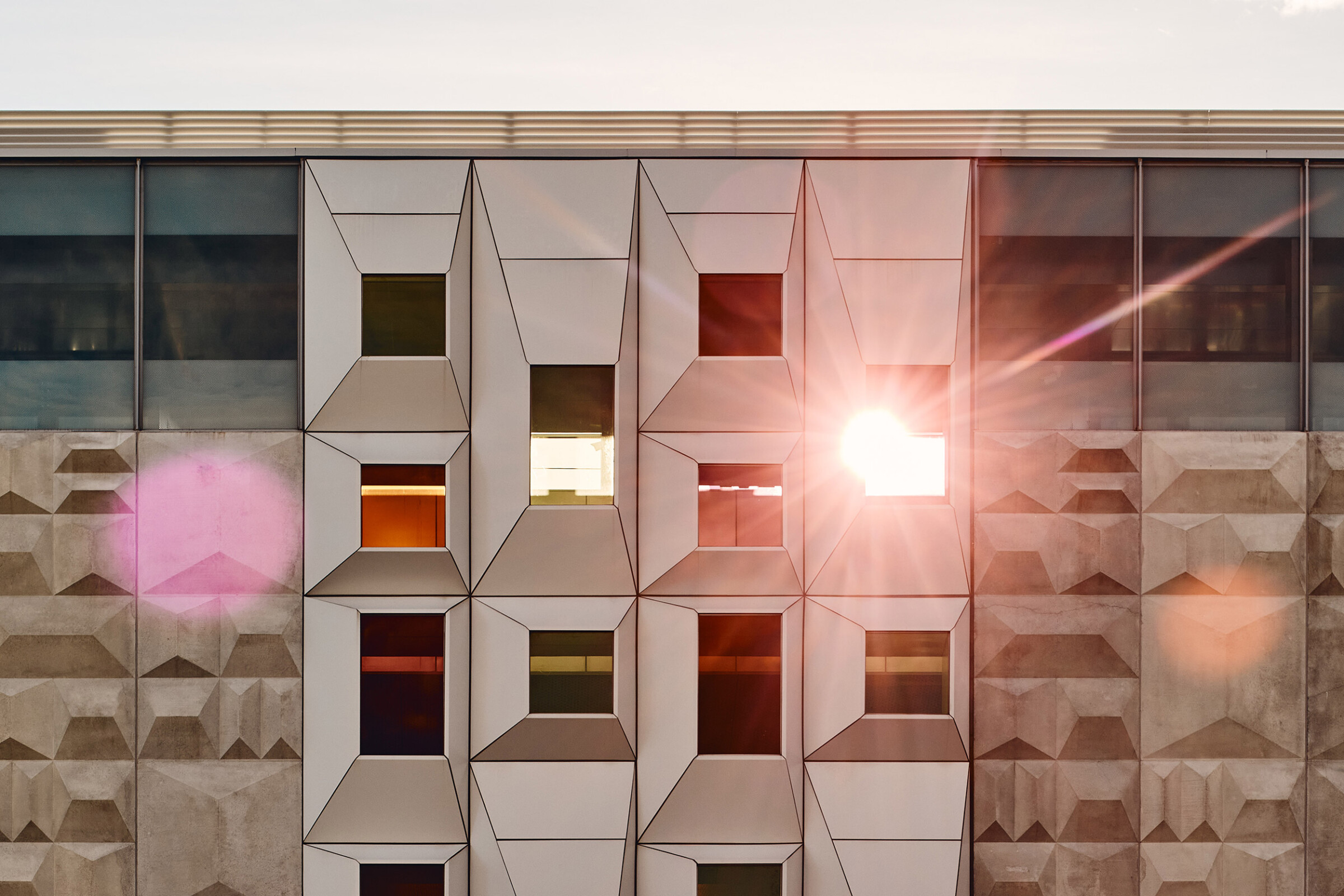
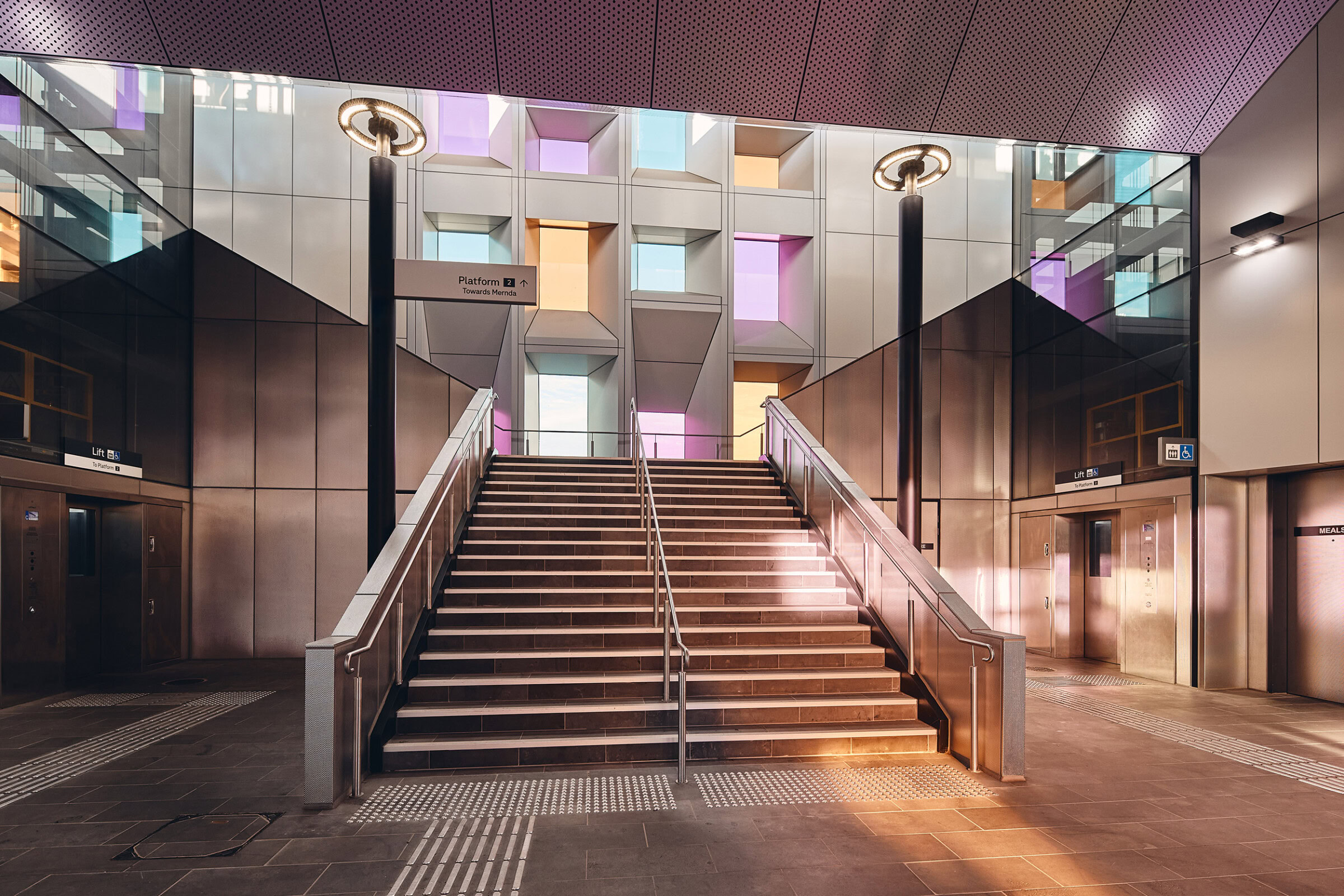
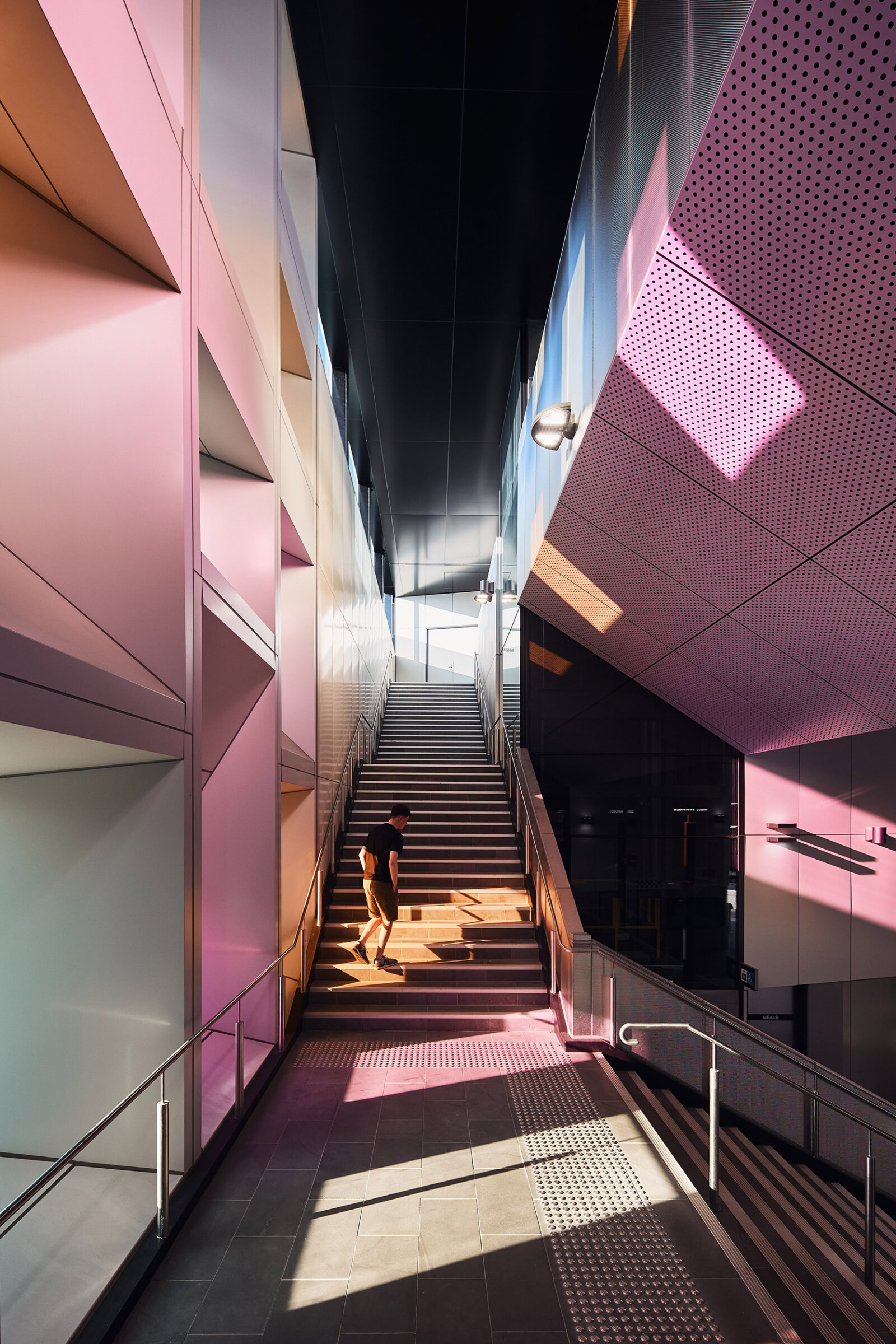
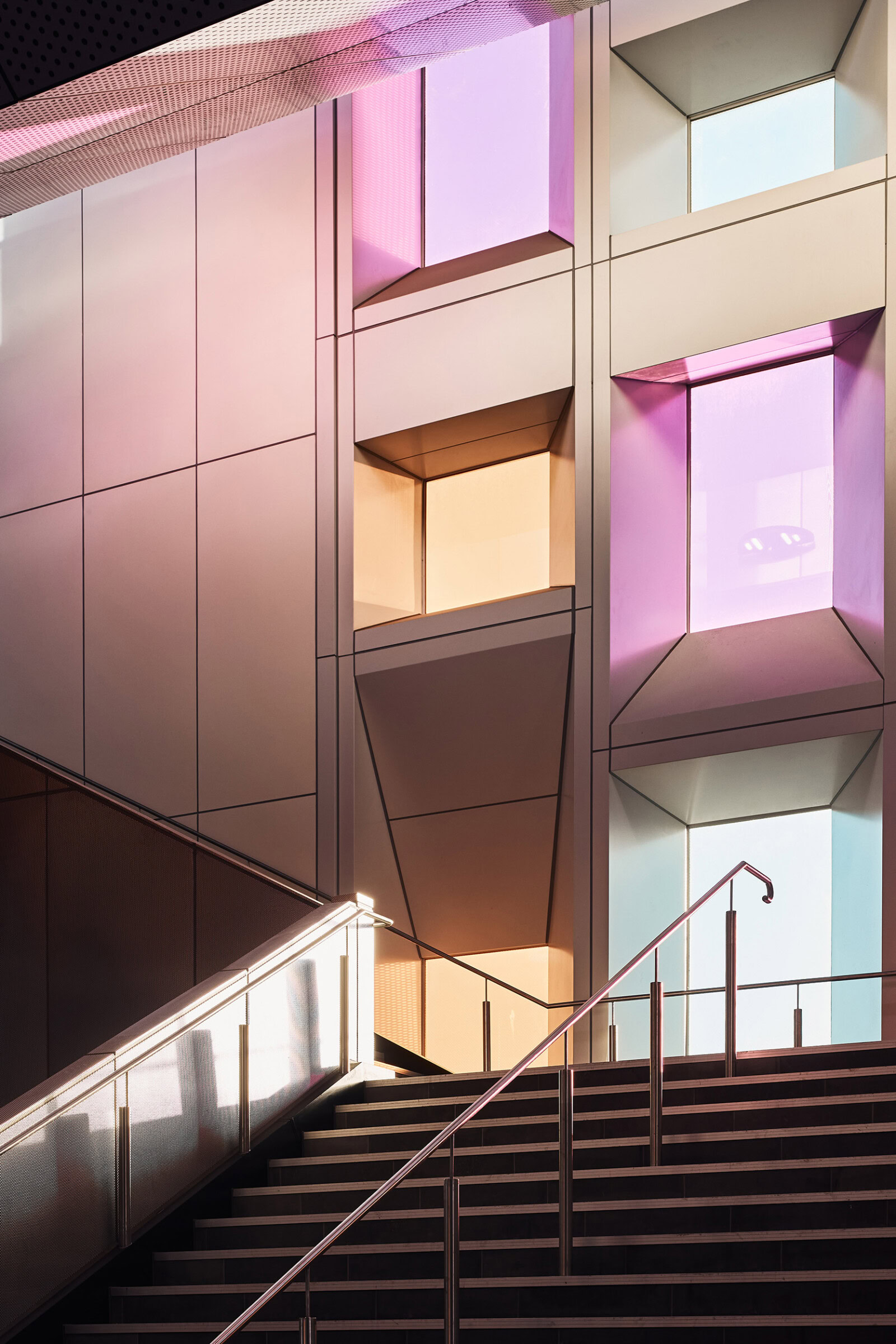
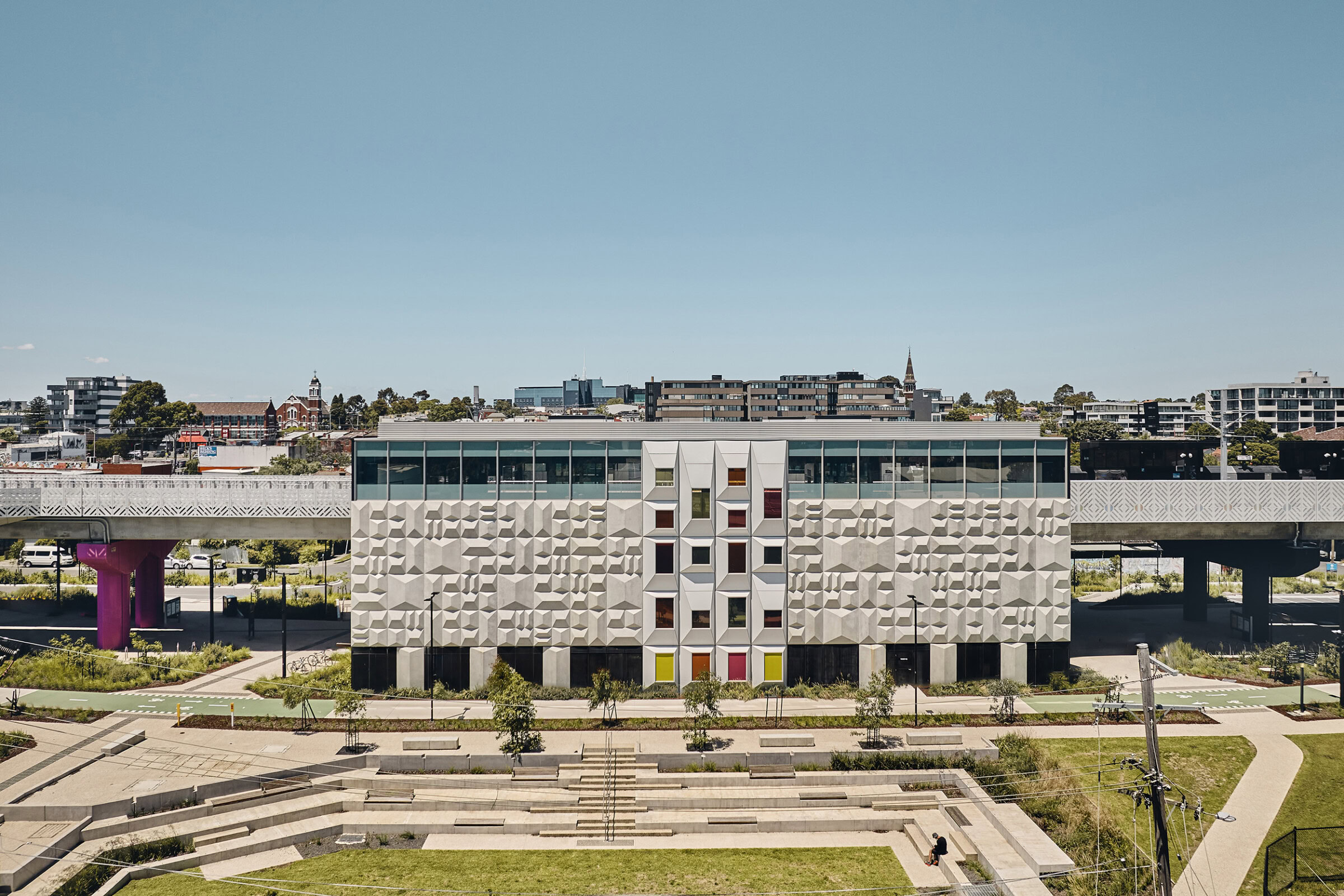
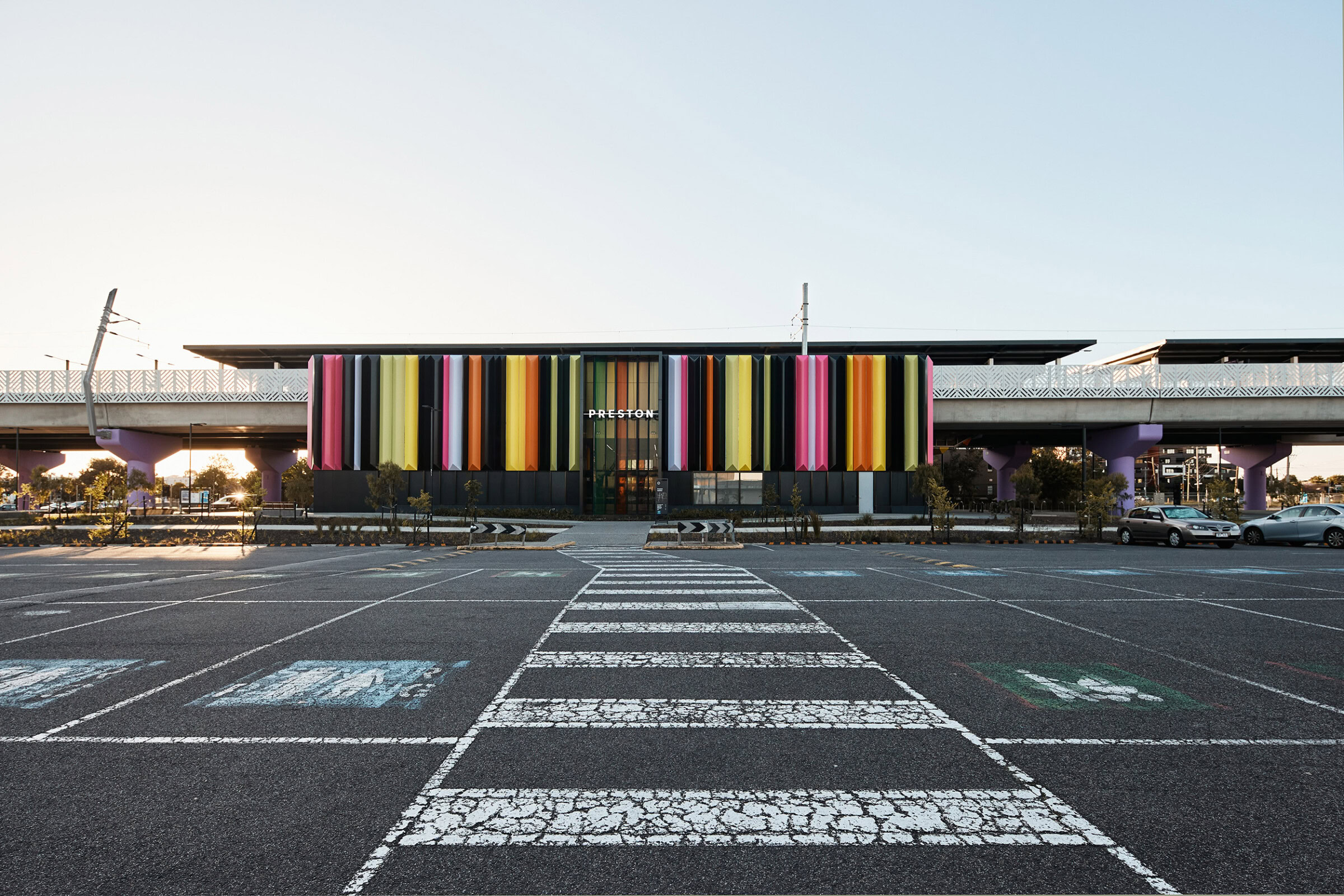
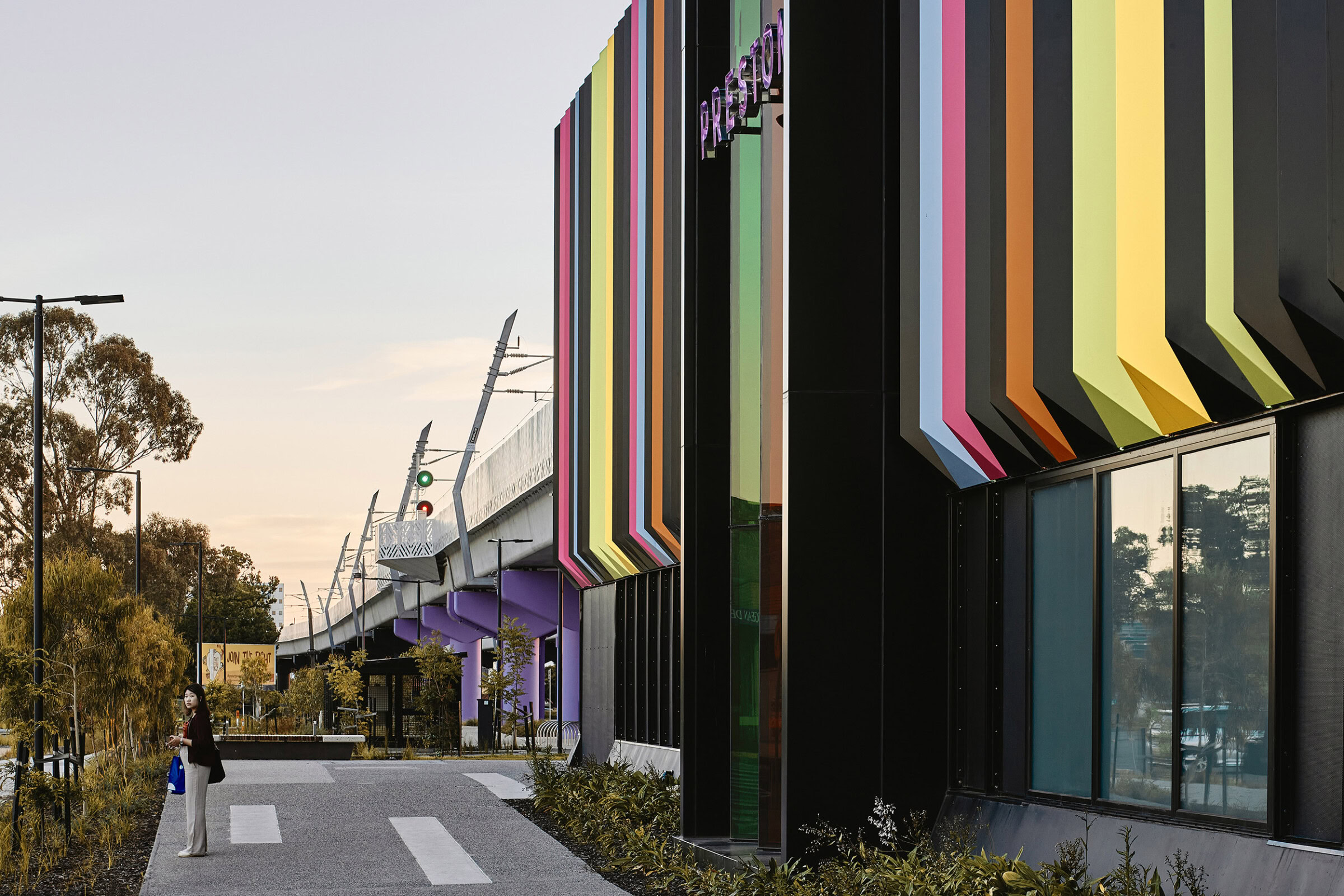
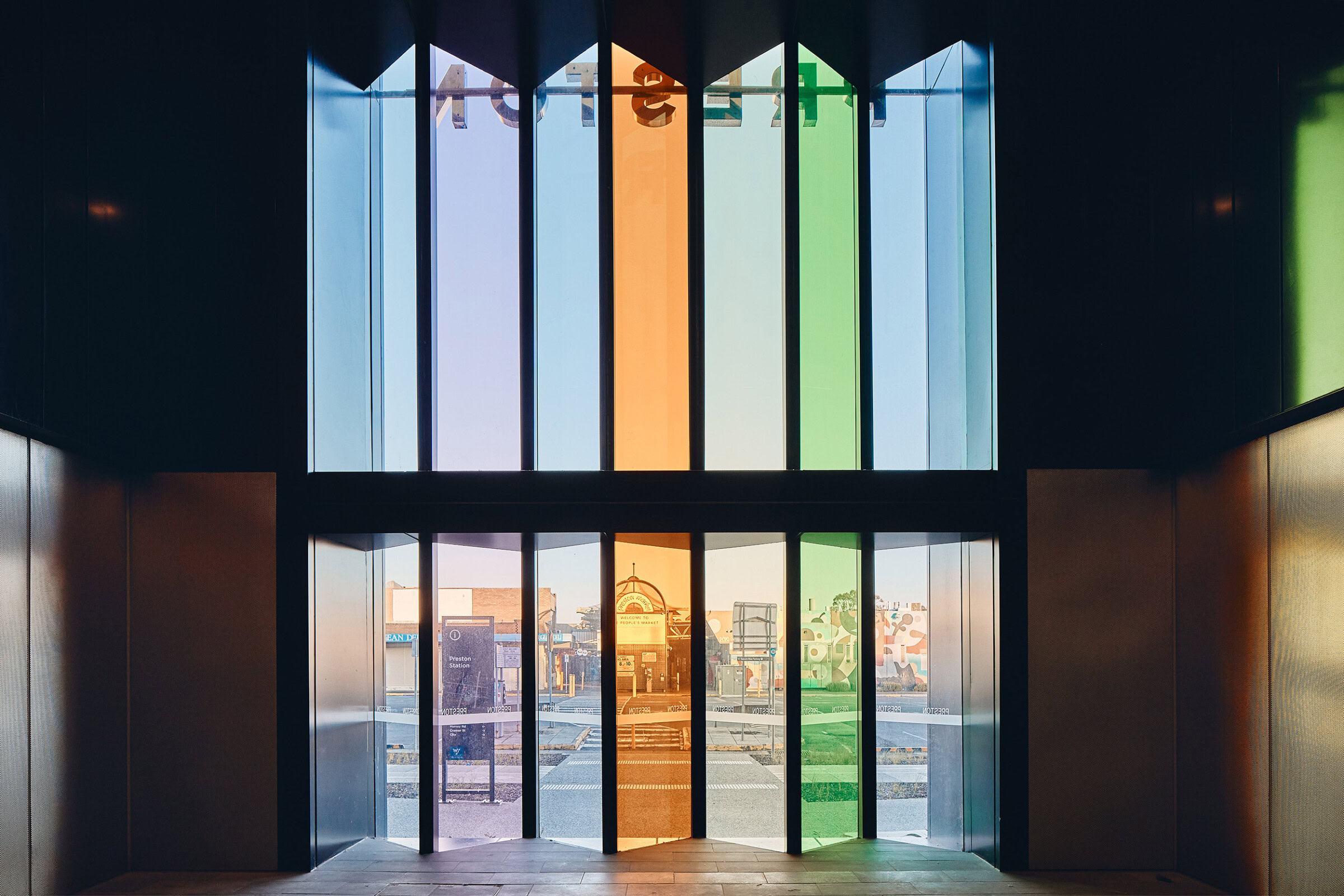
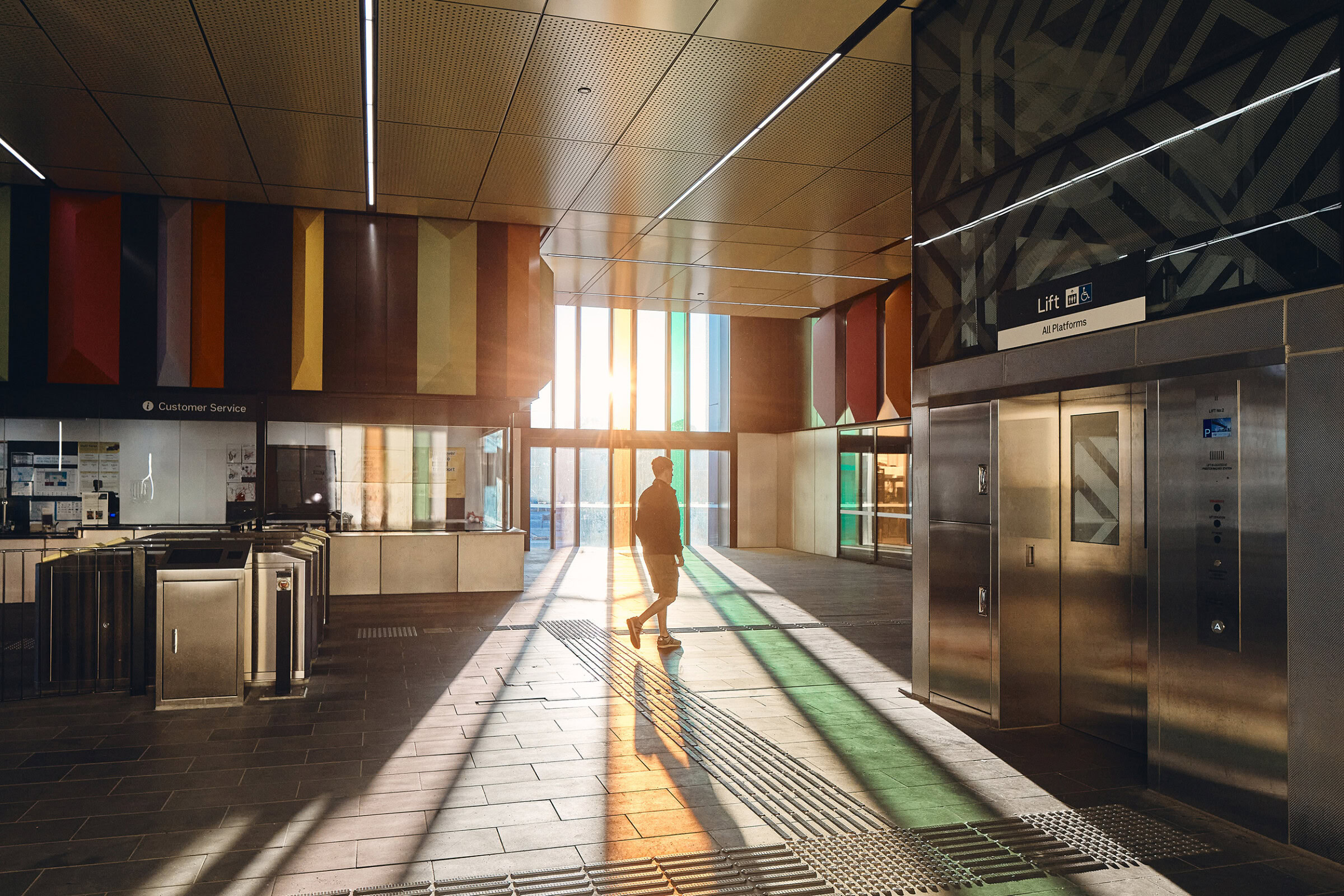
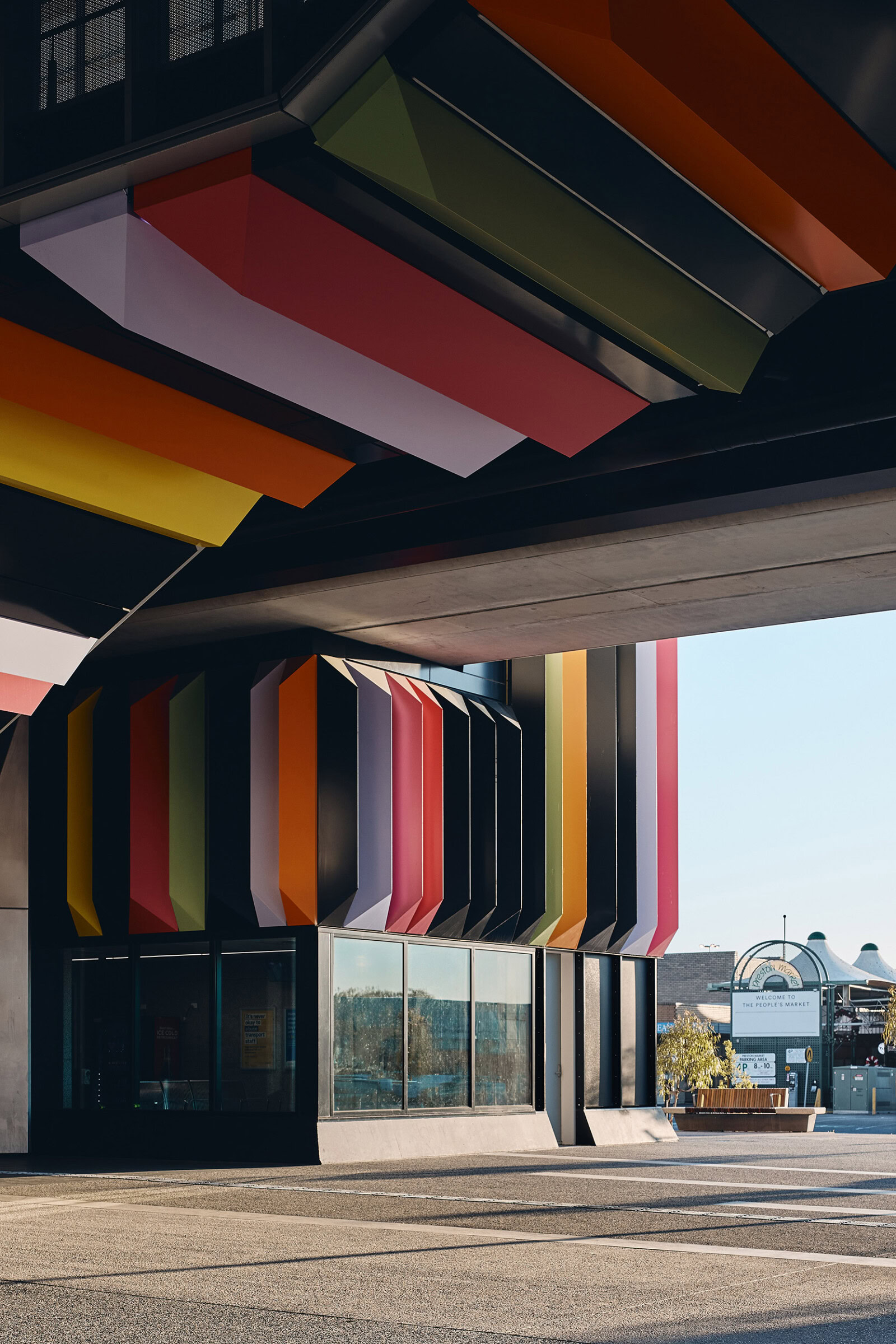
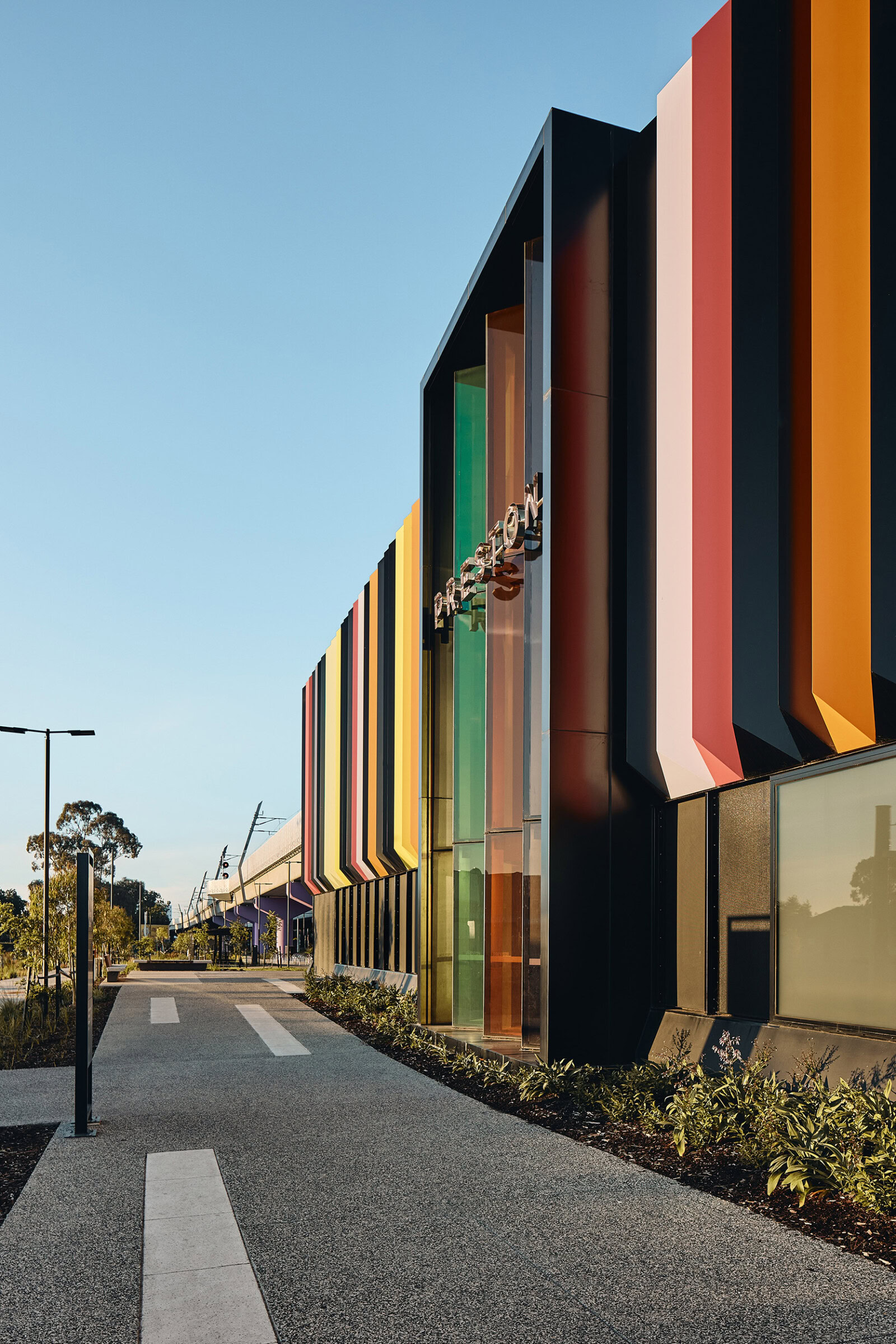
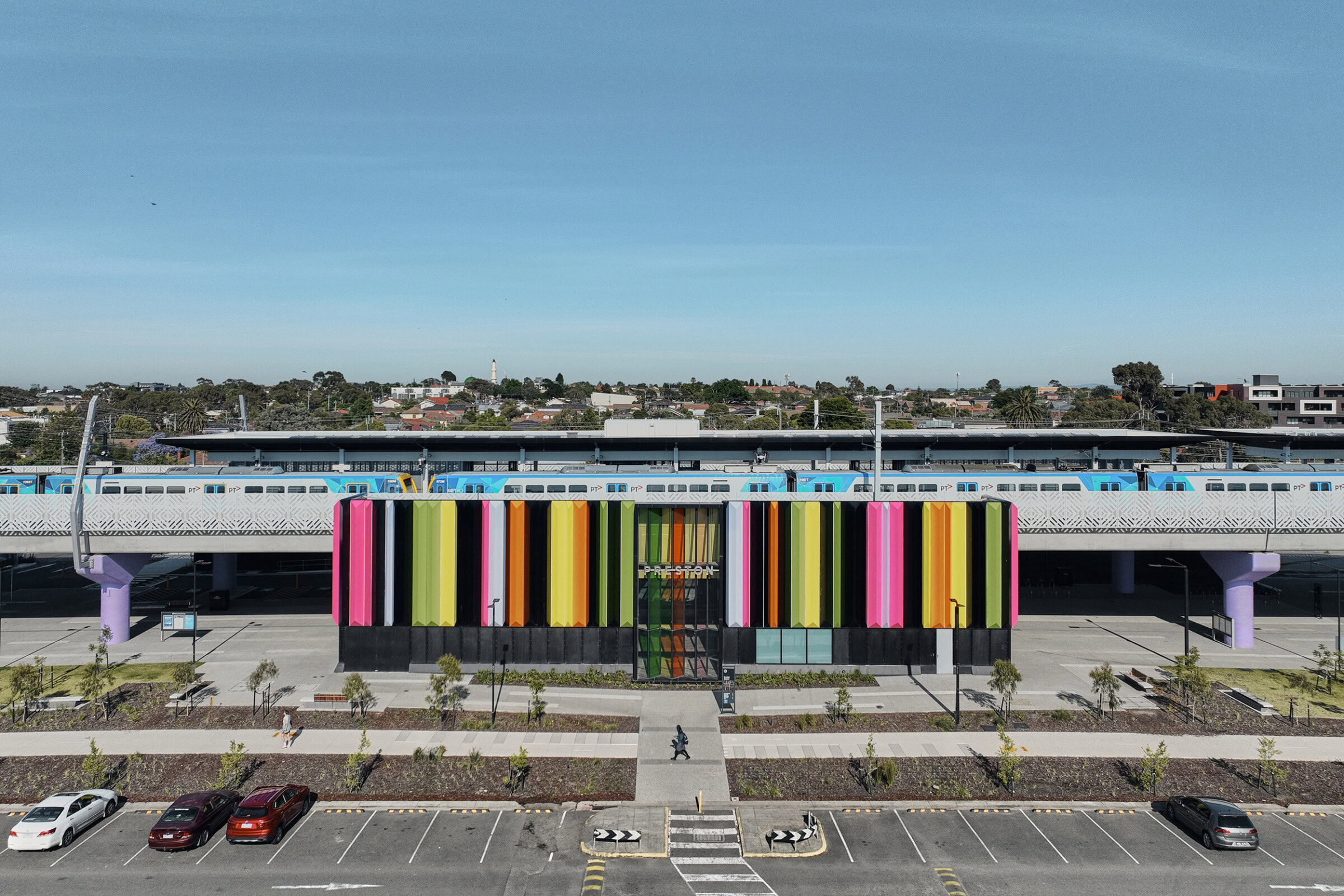
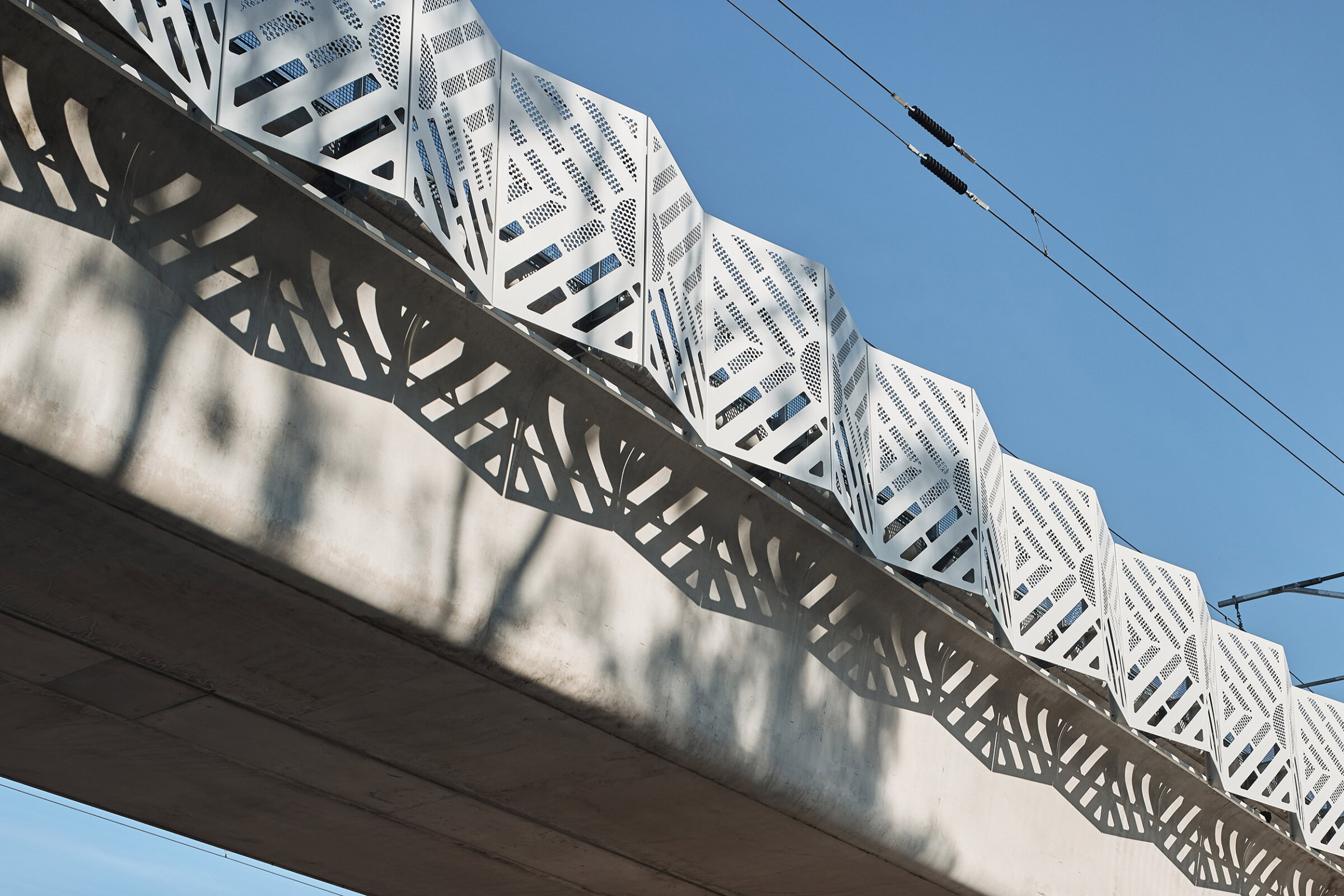
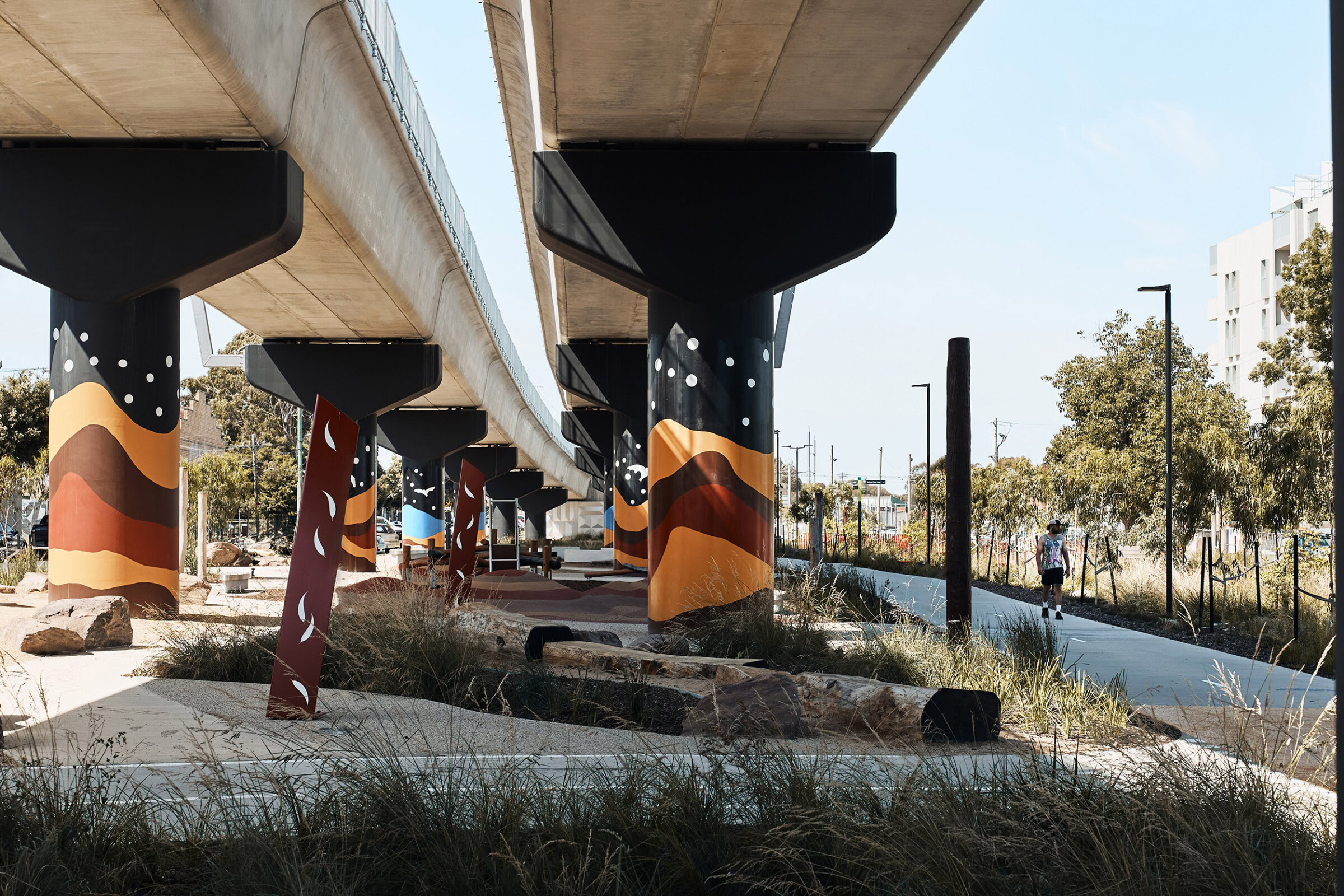
Preston Level Crossing Removal Project
Bell and Preston Stations have been developed as part of Victoria’s Level Crossing Removal Project. These stations form two critical parts of the greater rail redevelopment along the Mernda Line, removing 4 level crossings and providing 3 MCG’s worth of recreational community space. Developed in collaboration with Tract Consultants, this green space created beneath the elevated rail is activated with improved amenities and connections, including landscaping, gathering spaces, and shared user paths.
Bell Station’s façade references the heritage-listed housing stock surrounding the site. The City of Darebin’s roofscape was abstracted into a three-dimensional pattern that forms the concrete façade. The angled patterns animate the façade, which includes multi-coloured glass windows that filter coloured light into the double-height concourse space. These colours are drawn from hues that illuminate the neighbouring Darebin Arts & Entertainment Centre and reduce the need for artificial light in the concourse. Bell Station’s development includes the design of a public amphitheatre doubling as a flood basin. The dual-purpose space, adjacent to the Darebin Arts & Entertainment Centre, allows the existing community asset to extend into the station development.
Preston Station’s design reflects the influence of the neighbouring Preston Market. The façade was designed as an array of black vertical folds, resembling a barcode used by market vendors. These folds were filled with vivid colours drawn from the produce at Preston Market to extend the vibrancy of the market into the station. This vibrancy was then extended into the station’s interior; the cladding continues into the concourse and the windows filter coloured light into this space. Additionally, Preston Station has been designed to be adapted to the future development of Preston Market.
Throughout the project, colour and form are used as tools for placemaking. The Mernda Line is attributed a lilac identity. As such, pink and lilac piers and feature lighting perform as civic markers. As colours that do not naturally occur in the built environment, these identifiers enhance the stations’ prominence. The patterning, coloured cladding elements and lighting of both stations’ façades enable the buildings to perform as placemaking mechanisms and celebrates rail as a piece of public architecture. Both station designs champion environmental consciousness seen in the station’s sustainability credentials including meeting the highest ISC for rail projects, and 6-star Greenstar requirements.
The project features urban design and civic zones, including green spaces and native planting grounds, in order to promote and act as an ecological network. The increase in amenity around and within the stations increases user activity and activation. This activation promotes safety by increasing passive surveillance around the network. These spaces used for public amenities also provide better access to streets previously blocked by the rail corridor.
Both Bell and Preston Stations incorporated Indigenous design initiatives to create meaningful and inclusive spaces. The outcomes of this include a range of landscape and urban design elements. These include space for yarning circles in the surrounding landscaping, and Indigenous design elements such as the viaduct screen pattern and the lift pattern at both stations. The project fosters opportunities for cultural learning and serves as a functional community space.
The plans for both stations carefully considered program so that they could function effectively. For example, Bell Station was planned with programs inhabiting the four corners of the building, so that the generous concourse remains unconditioned. Additionally, the staircases in Preston Station allow the platform to load from either end, evenly distributing passengers along the platform and thereby the train.
As civic places of arrival and departure, the project links the local community to greater Melbourne. In doing so, it provides safe and equitable access. The project exemplifies how transportation infrastructure can be reimagined to revitalise the precinct.
